Selected Works
1960’s
Yuan Jai was born in 1941 in Chongqing, Sichuan province, her ancestral home being in Changsha, Hunan province, into a family for whom art and culture were part of daily life, and grew up immersed in Chinese calligraphy and painting. In 1958, she entered the Department of Art at the Taiwan Provincial Normal University (now Department of Fine Arts at National Taiwan Normal University), where she laid a solid foundation of Chinese painting skills by learning from many masters, such as Pu Hsin-yu and Huang Chun-pi. After graduation in 1962, she went to Europe to further her studies, first with a master’s degree in the Department of Archaeology and Fine Art History at the Université catholique de Louvain, then with doctoral studies on preservation and conservation of cultural artifacts at the Institut royal du Patrimoine artistique (IRPA) in Brussels. Yuan returned to Taiwan in 1969 and joined the Department of Antiquities of the National Palace Museum in Taipei. There she established the Office of Technology, the first museum department dedicated to the conservation of cultural relics in Taiwan, passing to the museum the knowledge she had learned abroad and coming in contact with masterpieces of Chinese ancient and modern arts.
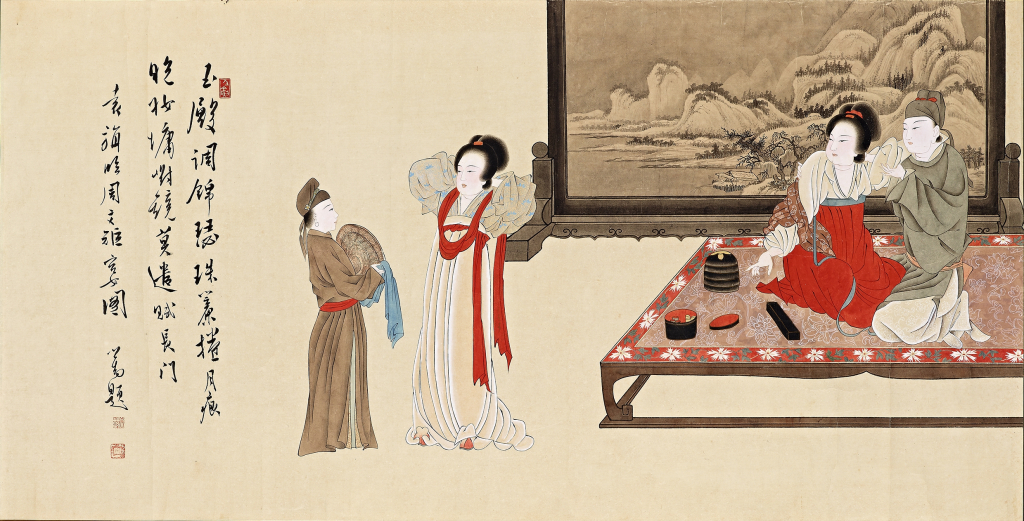
Yuan Jai
Study of “The Feast of Zhou Wenju”
1962
Ink and color on paper
63 × 123 cm
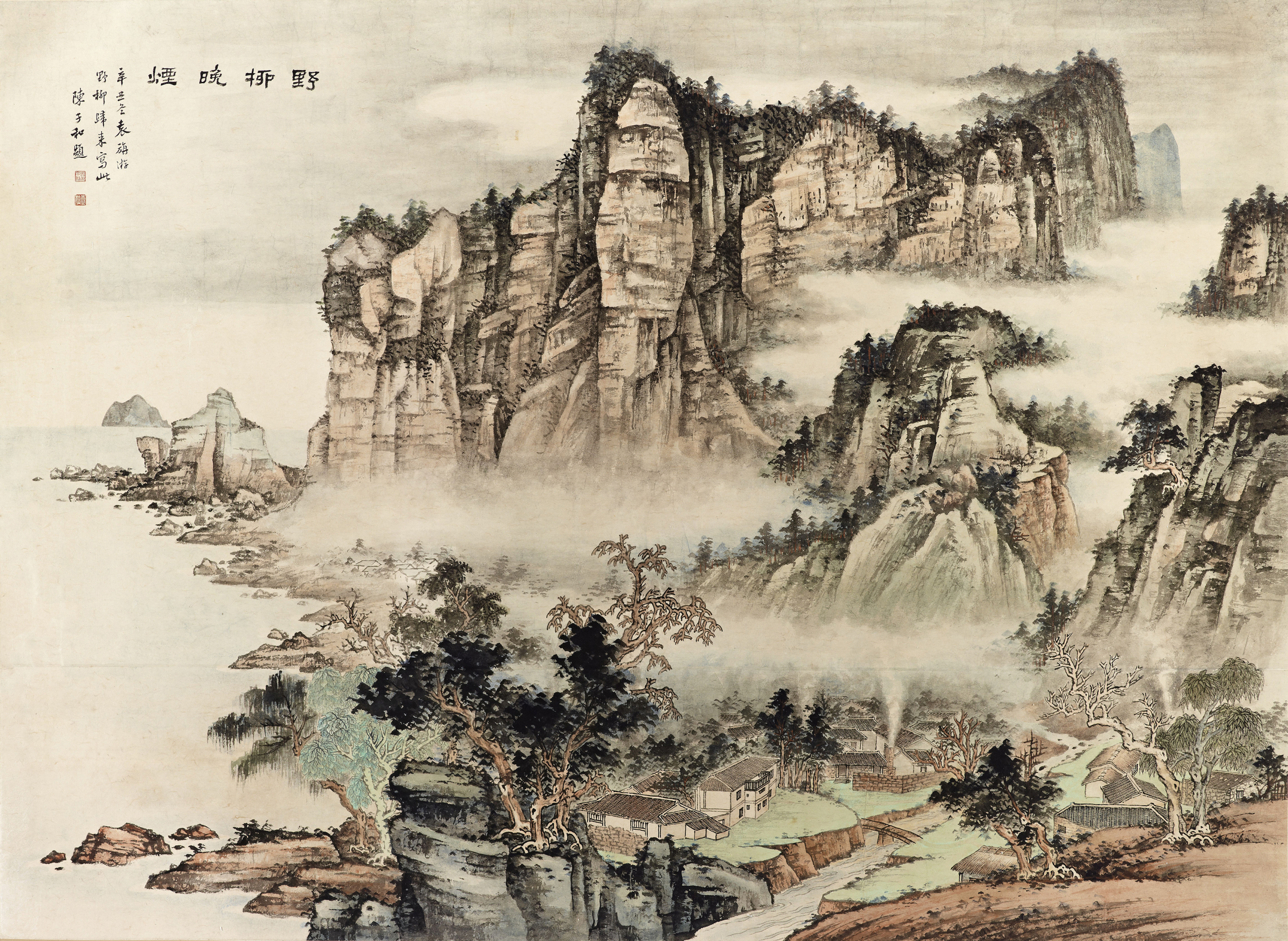
Yuan Jai
Willow Grove at Dusk
1962
Ink and color on paper
134.5 × 184.5 cm
1990’s
Yuan Jai resumed painting in the late 1980s. Starting from then, her works, including those on display in her first solo exhibition in 1993, were mostly ink on paper with both adherence to tradition and attempts of innovation in terms of her expression. On the one hand, she demonstrated in these works a well-developed command of traditional Chinese ink painting skills. On the other, her desire to infuse innovation into her works and create something different from the tradition was quite visible, particularly in her landscape series with the word “amazing” in their titles. Yuan put it well in her own words: “I just completely changed the traditional styles, using modern colors and compositions. However, my works are still Chinese paintings with the blood of traditional painting in them.¬” In this period of her artistic creation, Yuan still mainly adopted the common subject matters in traditional Chinese painting, such as mountains, water body, trees, and rocks. In the seemingly traditional compositions of her paintings, there were already signs of transformation in styles and inclusion of geometrical elements. The colors were as rich and diversified as the color schemes in traditional Chinese painting can be. These subtleties are all indications of Yuan’s aspiration to find her own unique way in Chinese ink painting.
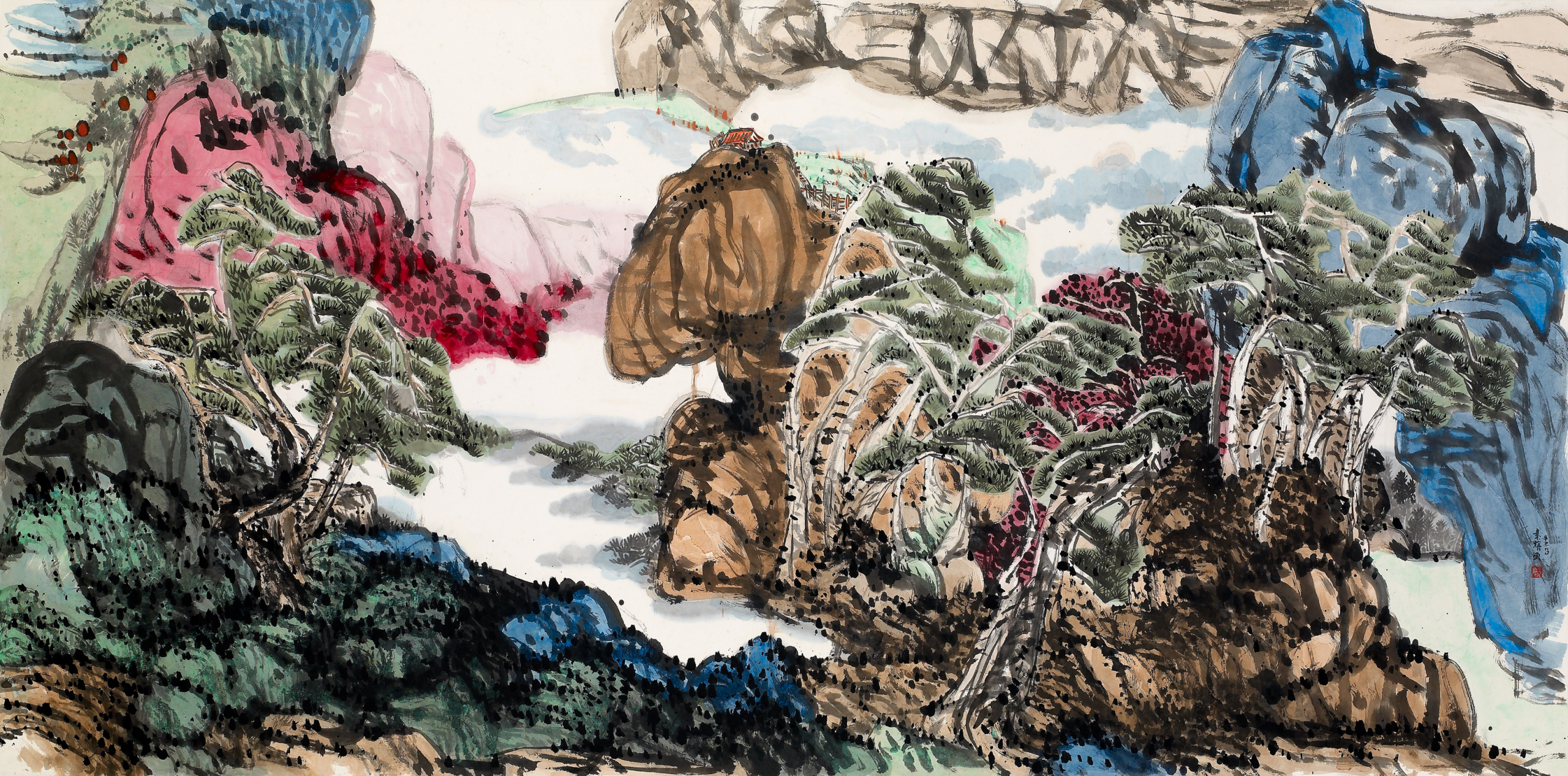
Yuan Jai
Clouds of Purple
1991
Ink and color on paper
123.5 × 248 cm
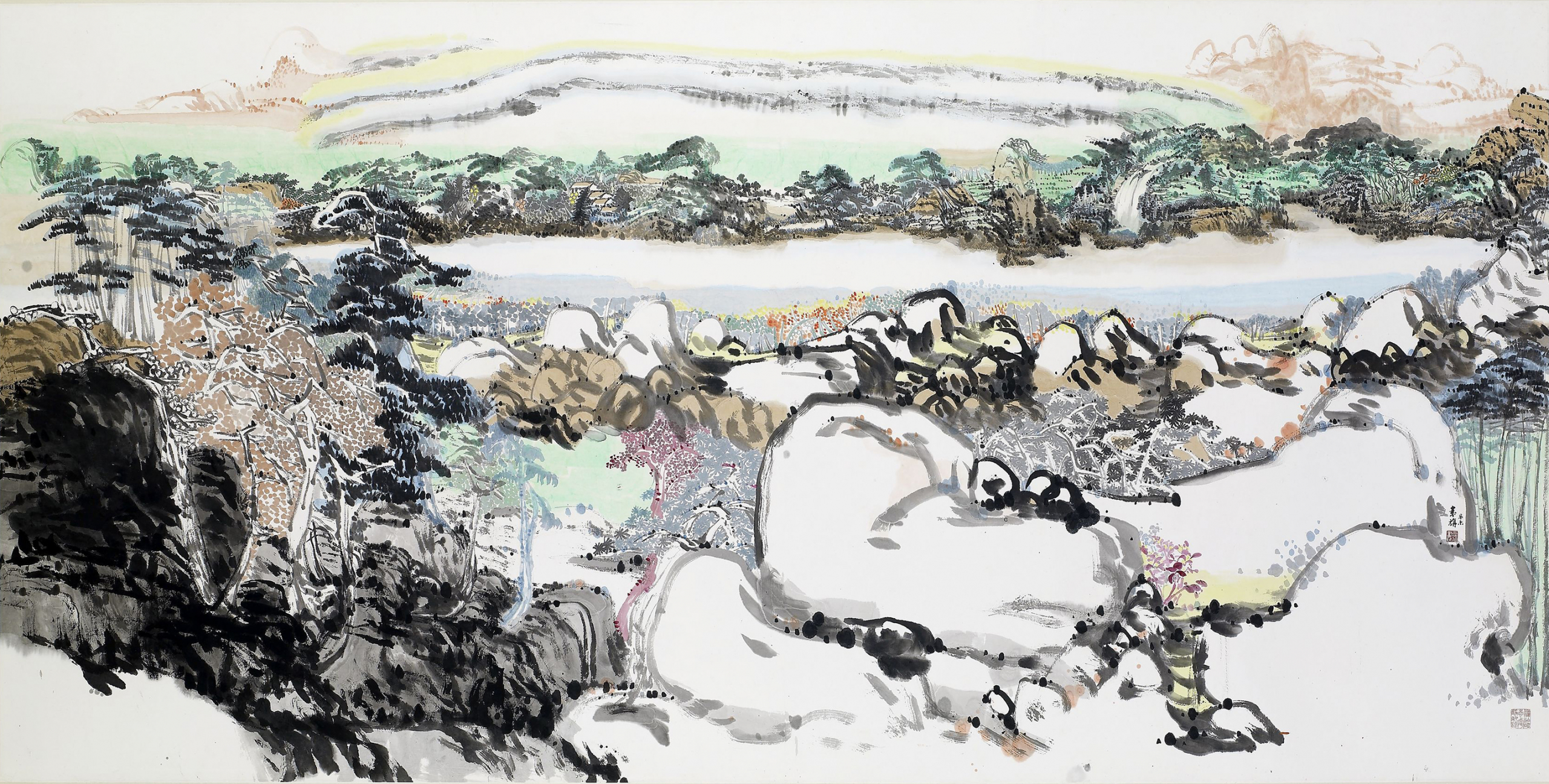
Yuan Jai
White Pebble Bay
1991
Ink and color on paper
122 × 243.5 cm
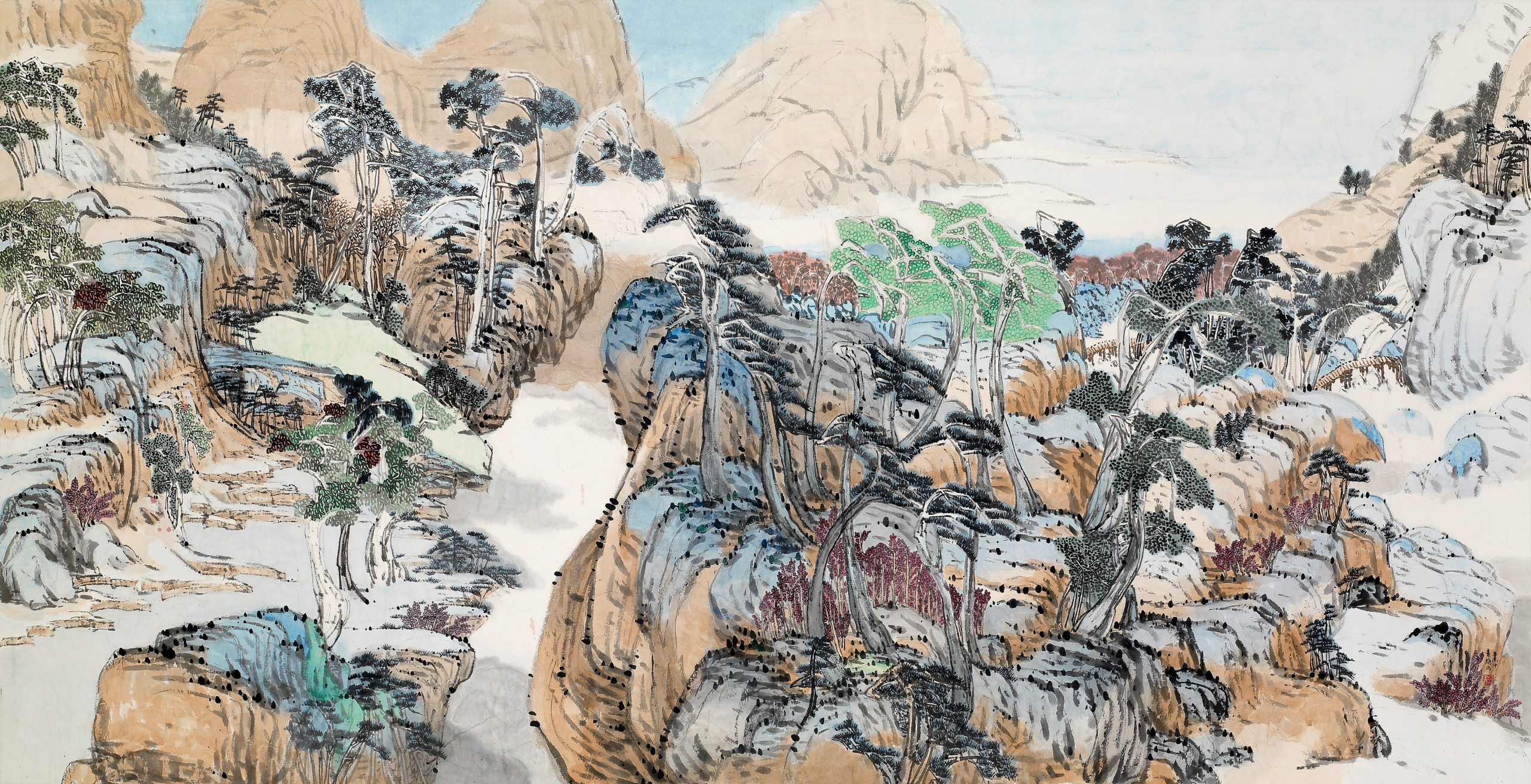
Yuan Jai
Dynamic Rocks
1991
Ink and color on paper
127 × 247 cm
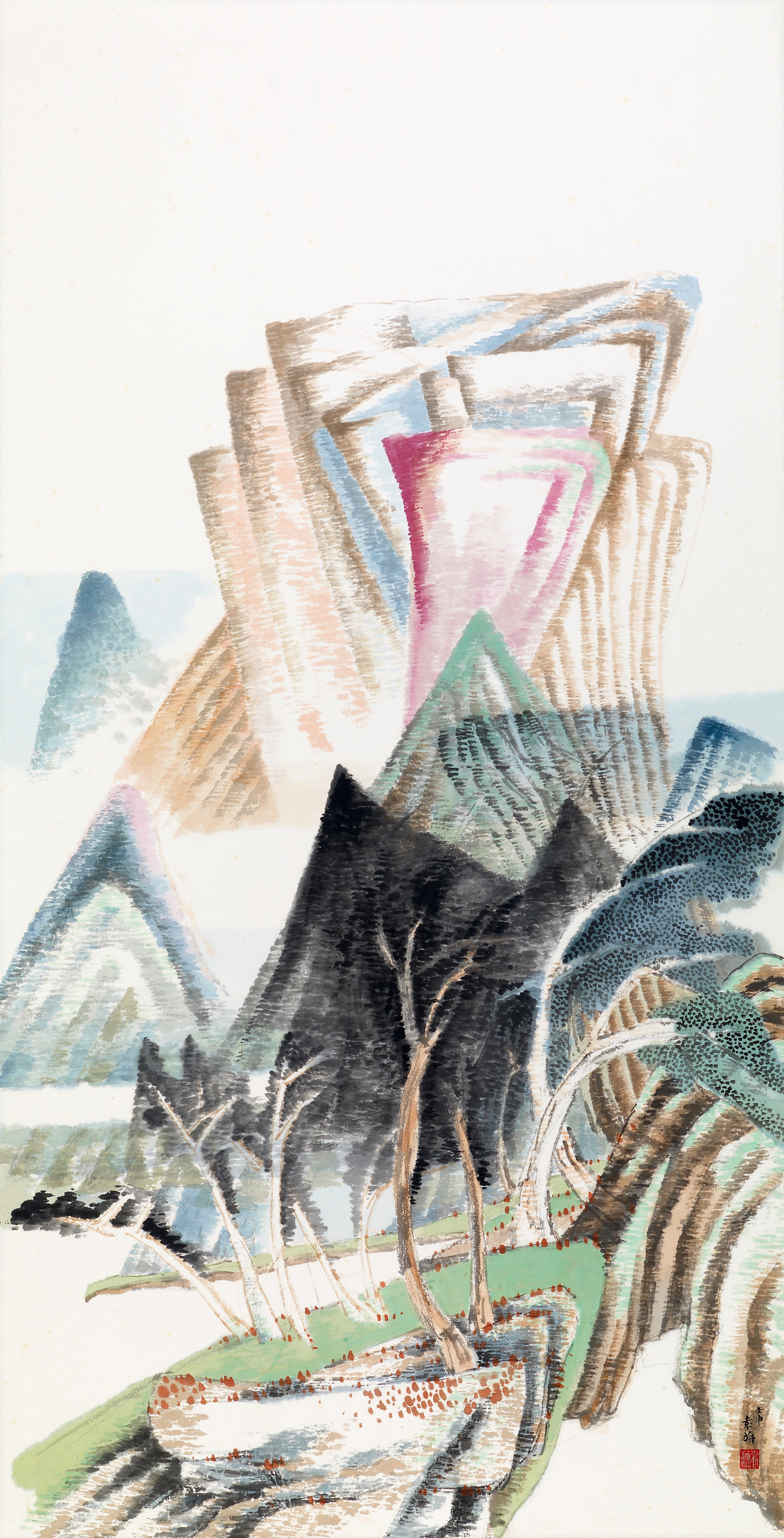
Yuan Jai
Amazing Canyon
1992
Ink and color on paper
126 × 64.5 cm
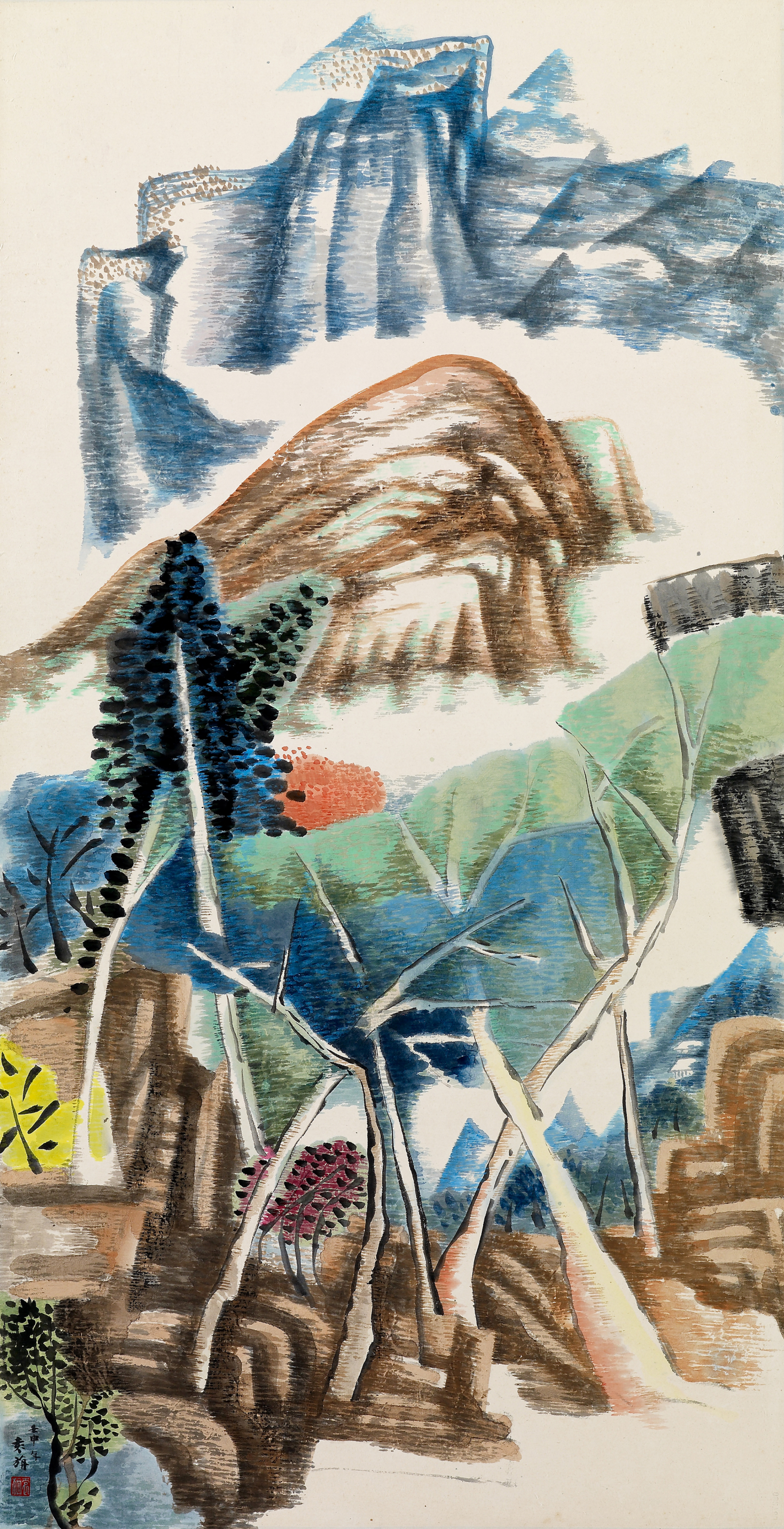
Yuan Jai
Amazing Scripture
1992
Ink and color on paper
126 × 65 cm
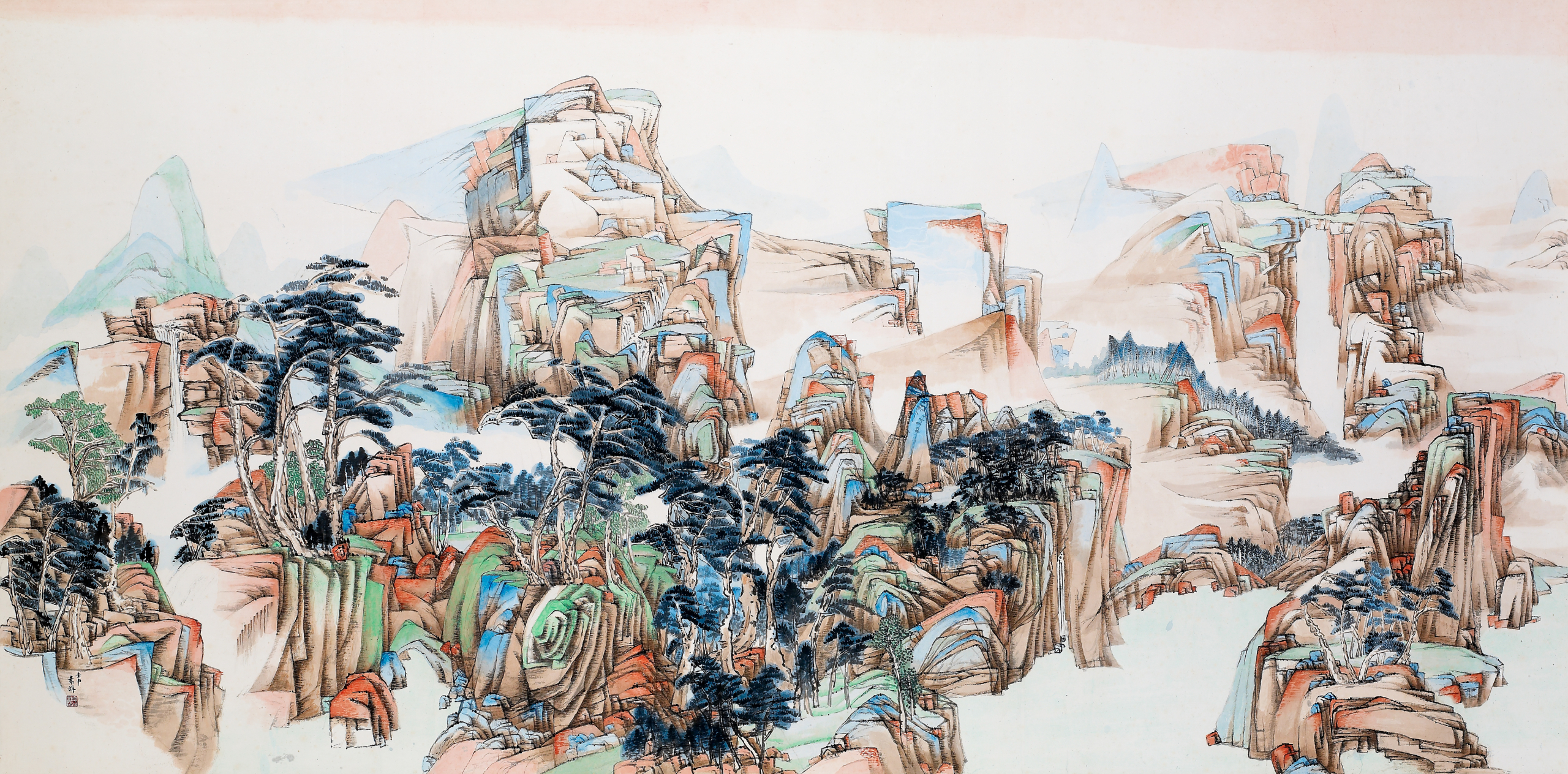
Yuan Jai
Imposing Splender
1992
Ink and color on paper
122.5 × 247 cm
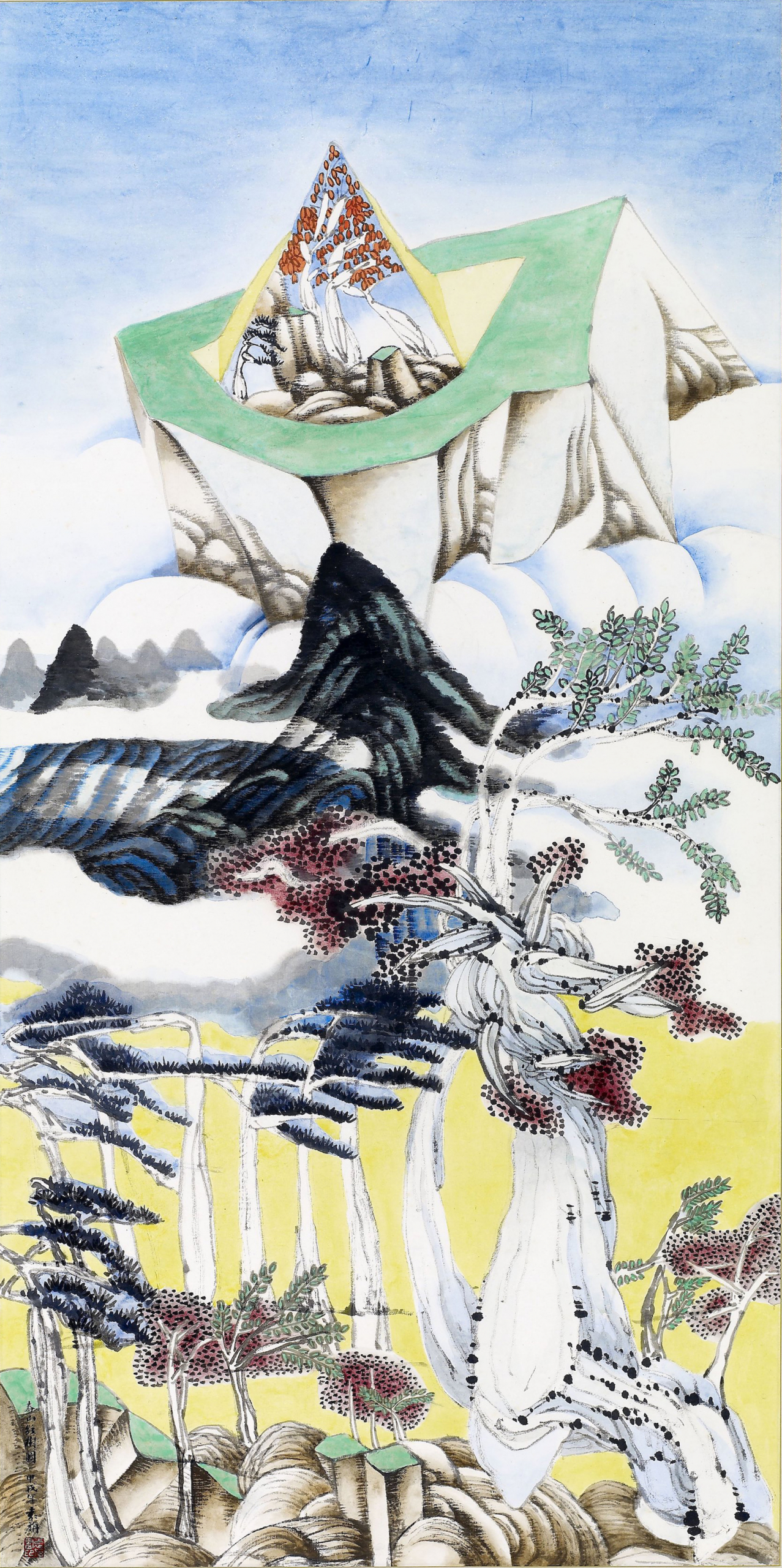
Yuan Jai
Towering Majesty I
1994
Ink and color on paper
136.2 × 68 cm
In 1997, there were two major changes in Yuan Jai’s ink painting. The first one was the use of materials. Her preference gradually changed from ink on paper to strong colors on silk for this material allowed for multiple layers of color application. The second one was the change of her themes and compositions. Landscape was no longer the major theme of her works. As she used more strong colors, she started to paint more flowers, plants, insects, human figures, or even her own imaginary scenery, creatures or objects. In this stage, her works were full of intriguing novelty and ingenuous creativity. In addition, she added a sense of rhythm in her lines to render a sense of dynamism in her composition. She would also create richness and flow in her compositions by putting the depicted objects, such as petals, drapery and folds in textiles, giving the compositions a sense of interesting intricacy and dimensional depth.
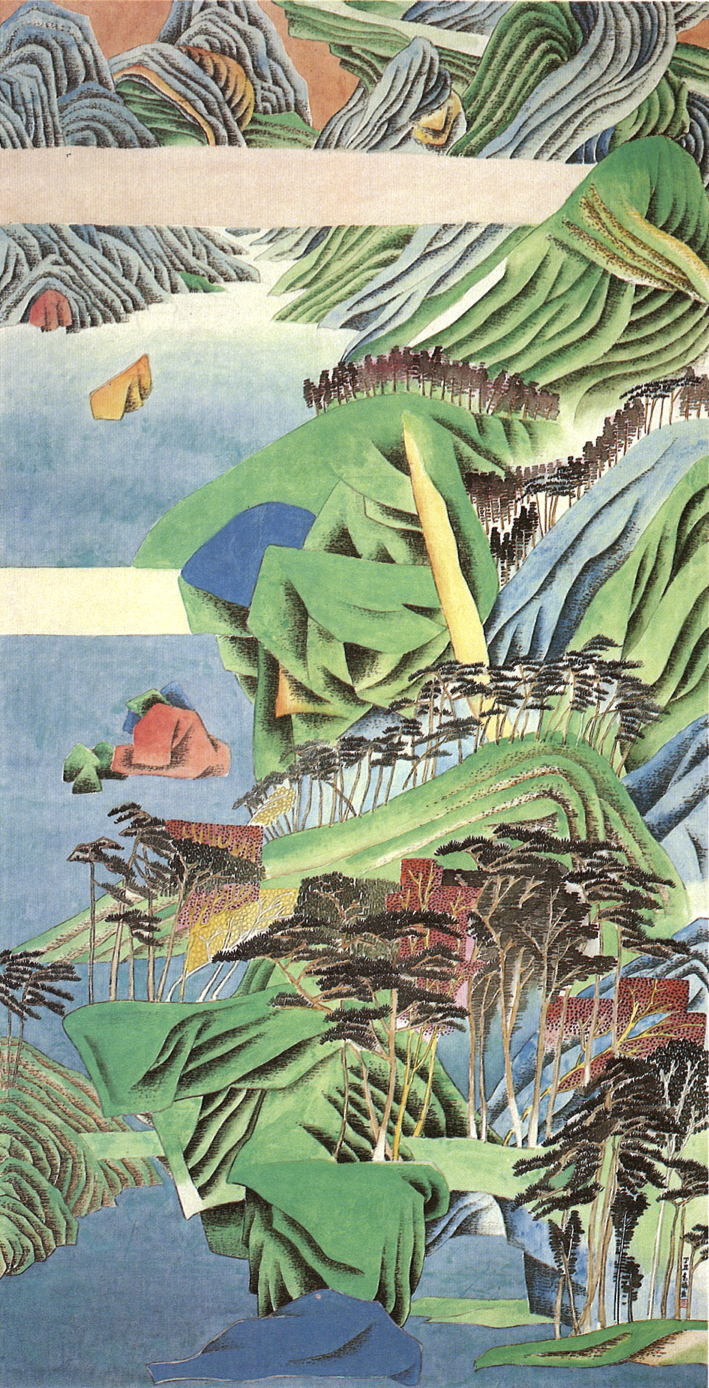
Yuan Jai
Landscape
1997
Ink and color on paper
177.6 × 91.5 cm
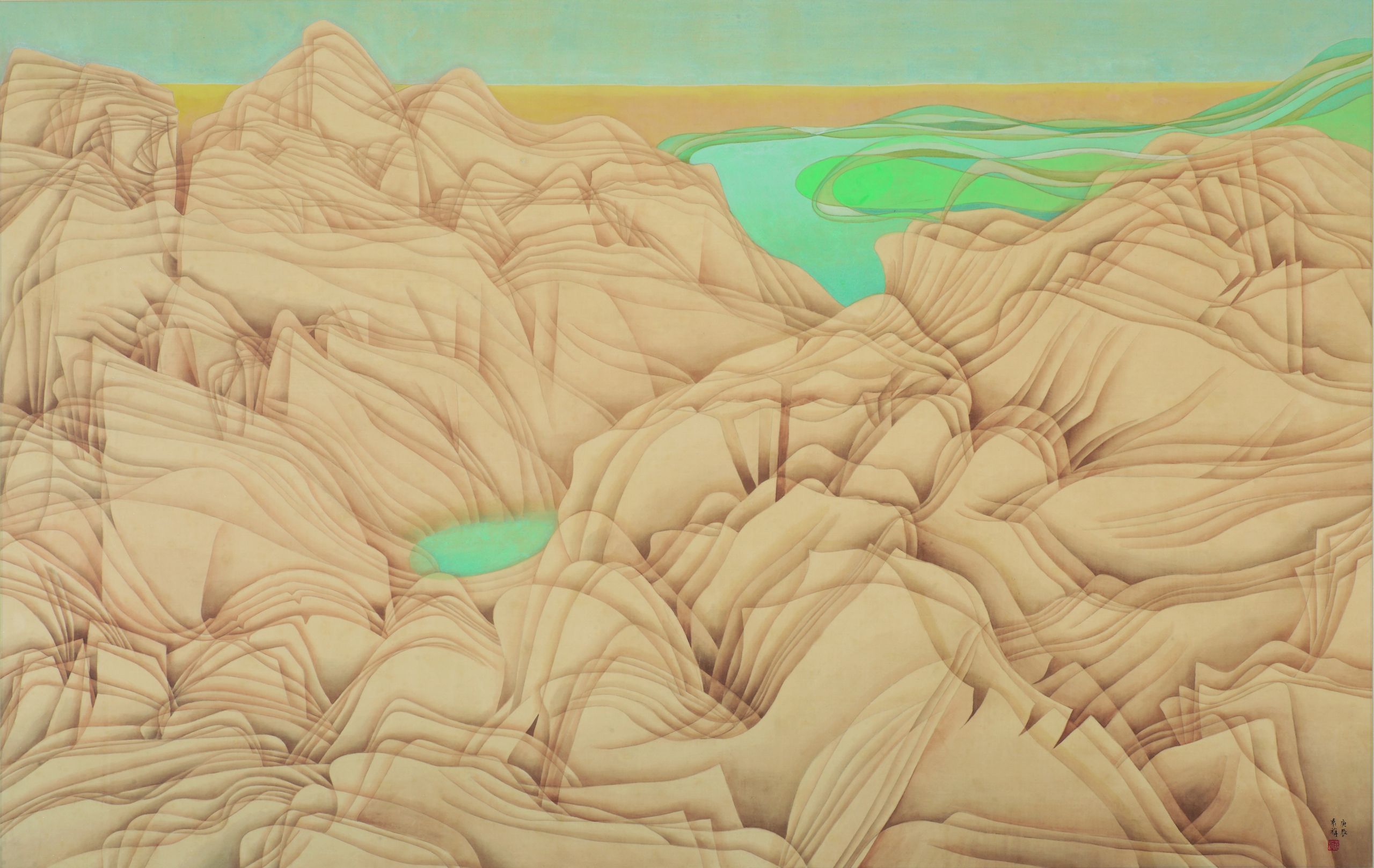
Yuan Jai
Shifting Hills
2000
Ink and color on silk
91 × 144 cm
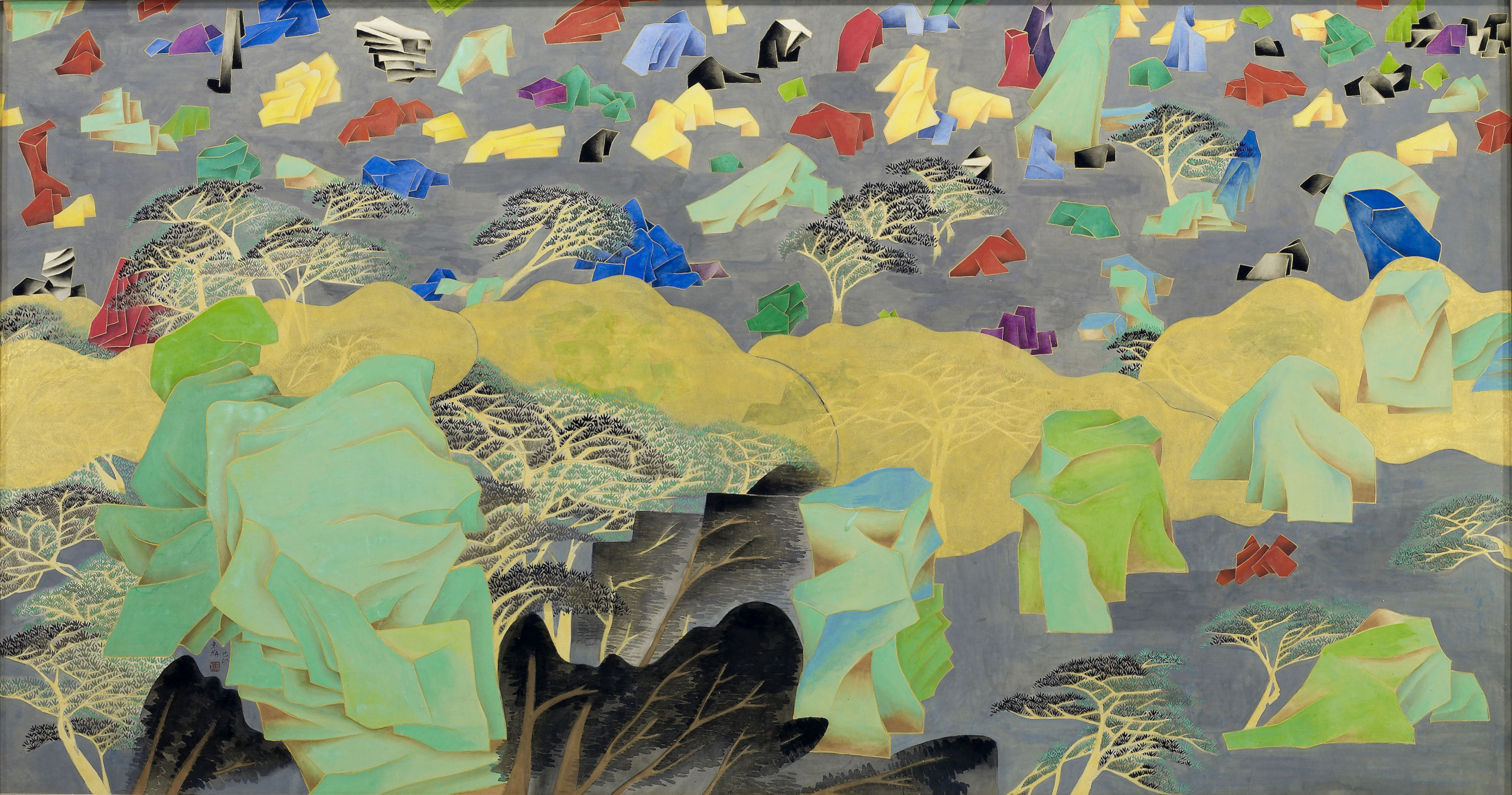
Yuan Jai
Age of Bloom
1998
Ink and color on silk
93 × 175 cm
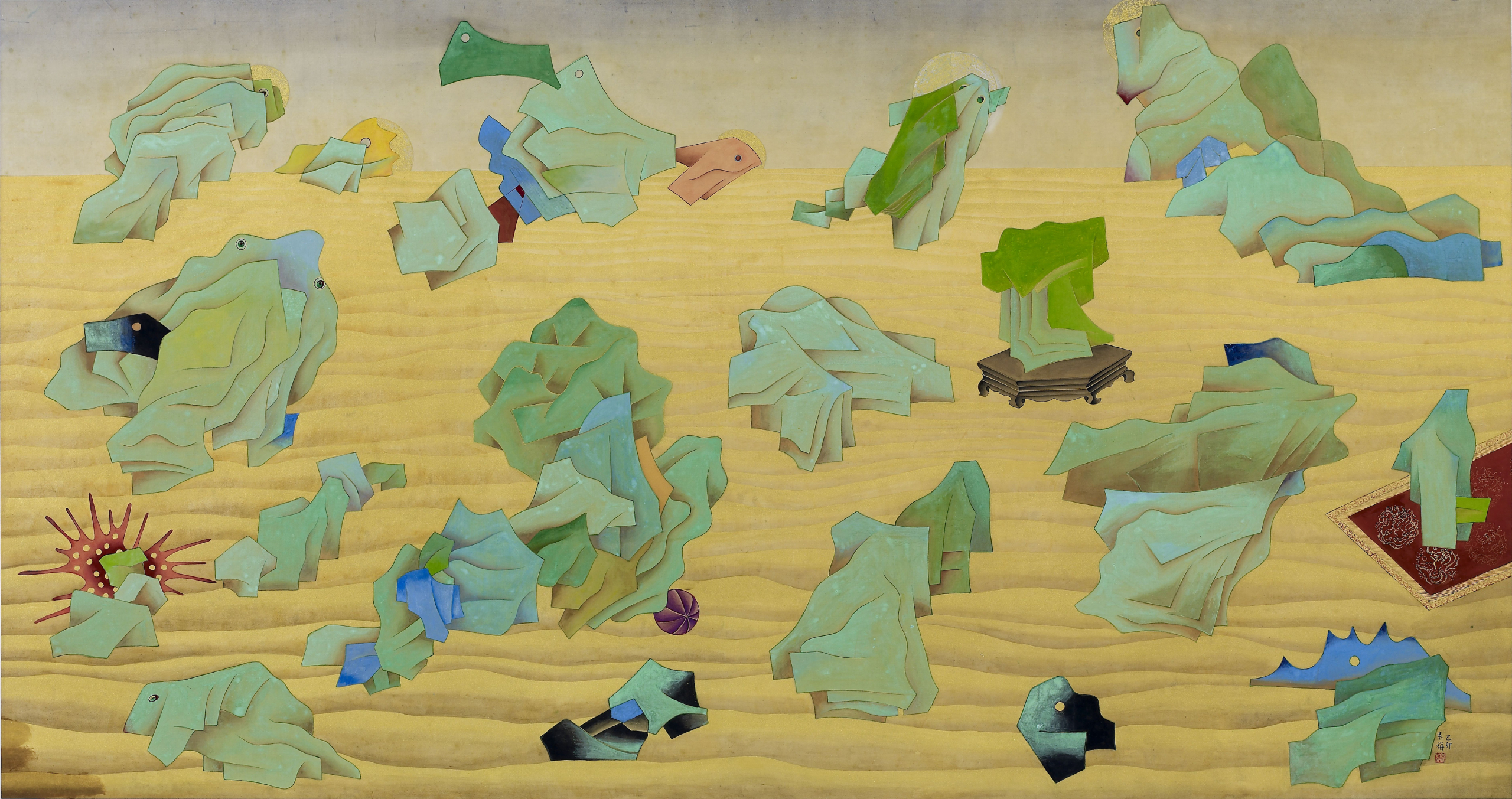
Yuan Jai
Jadeite Cabbage
1999
Ink and color on paper
96 × 170 cm
2000’s
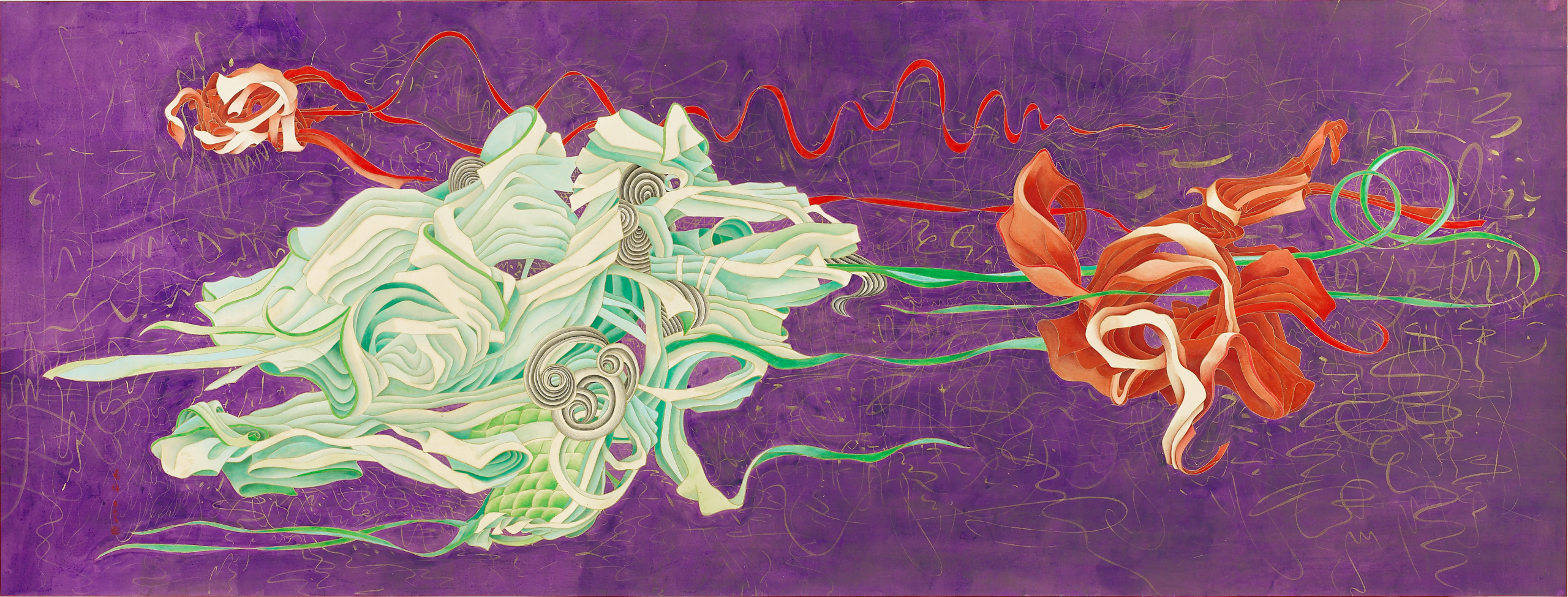
Yuan Jai
Flirting
2001
Ink and color on silk
84 × 222 cm
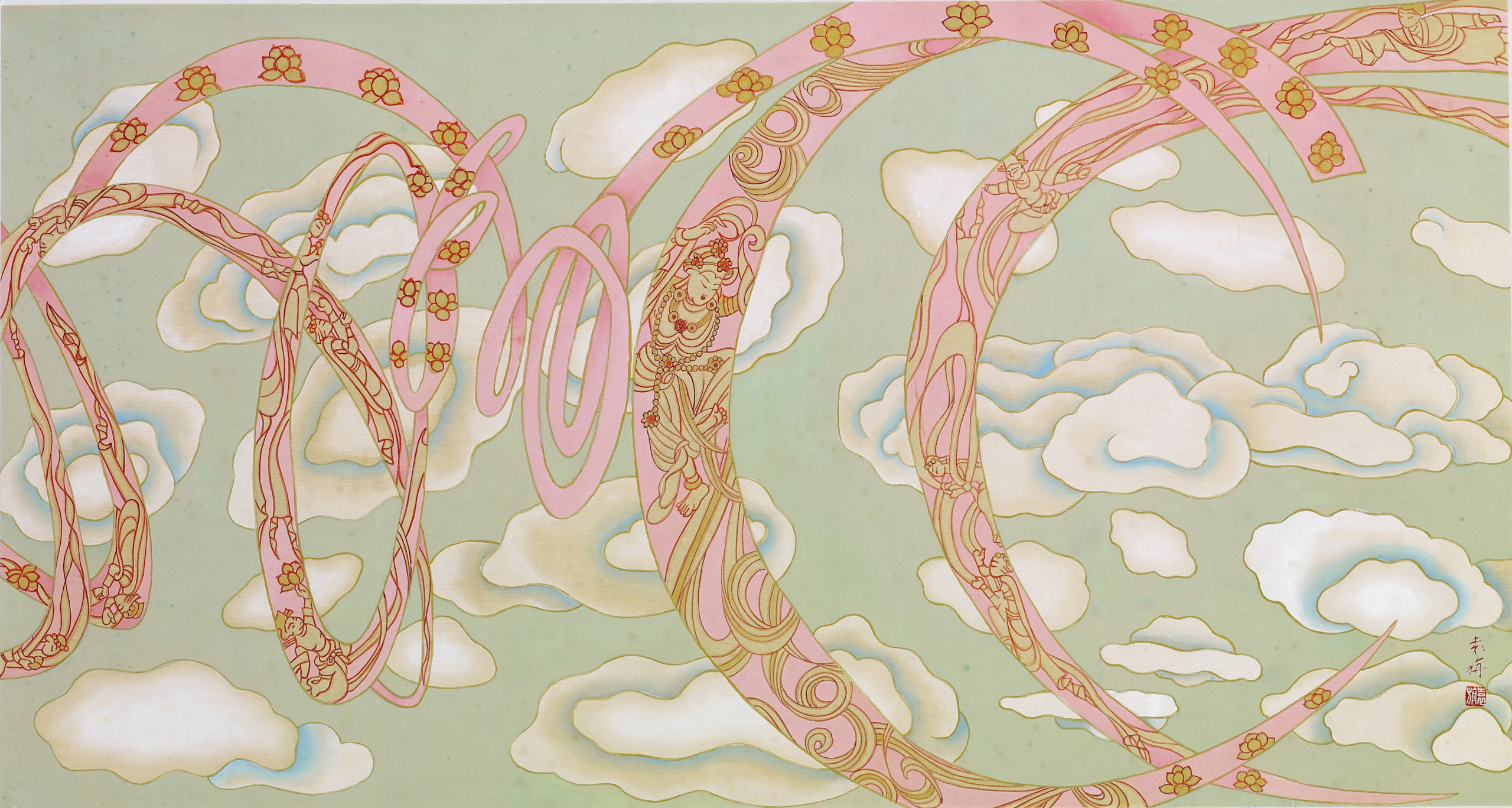
Yuan Jai
In Flight
2002
Ink and color on silk
46 × 85 cm
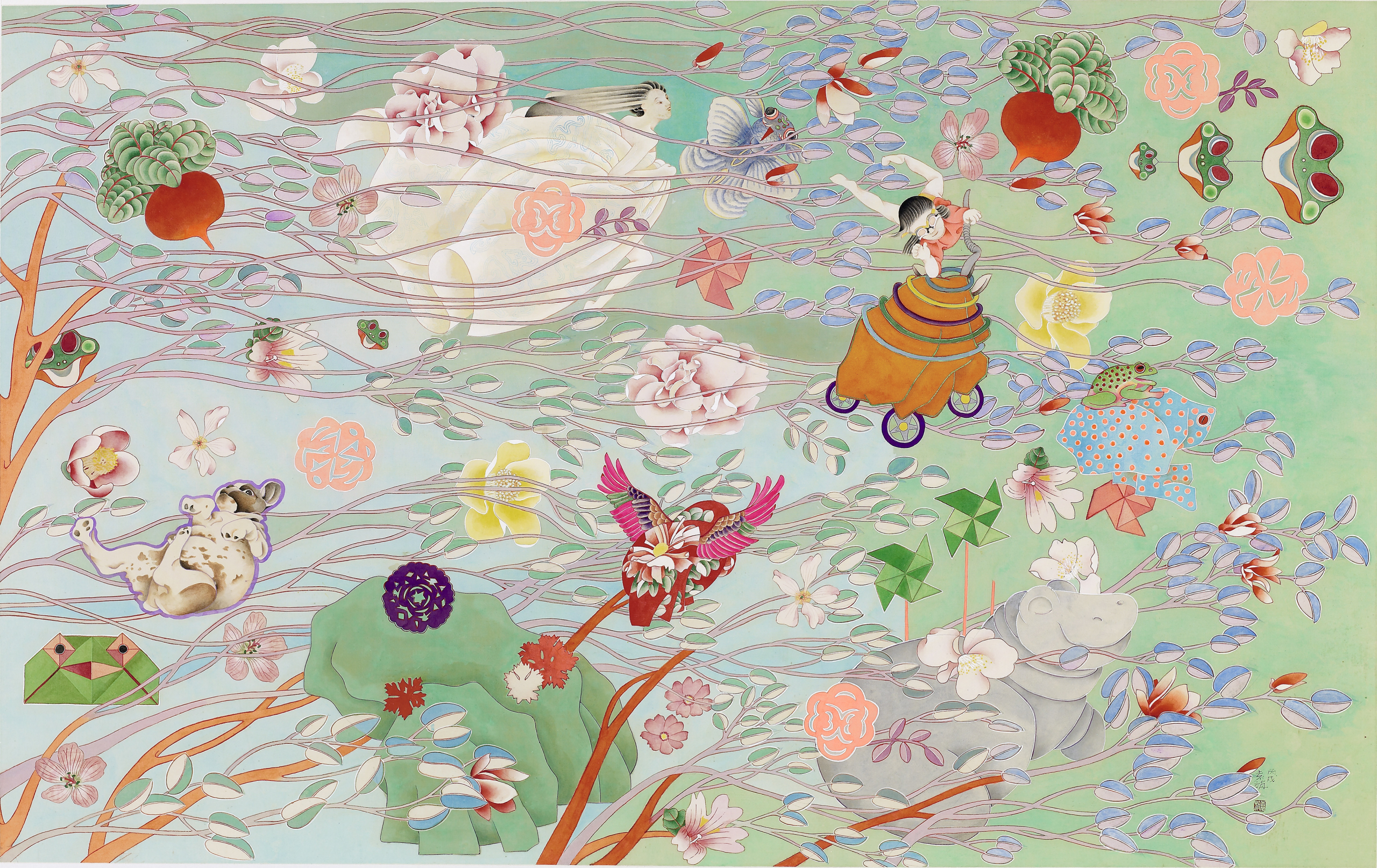
Yuan Jai
Motion
2006
Ink and color on silk
96 × 140 cm
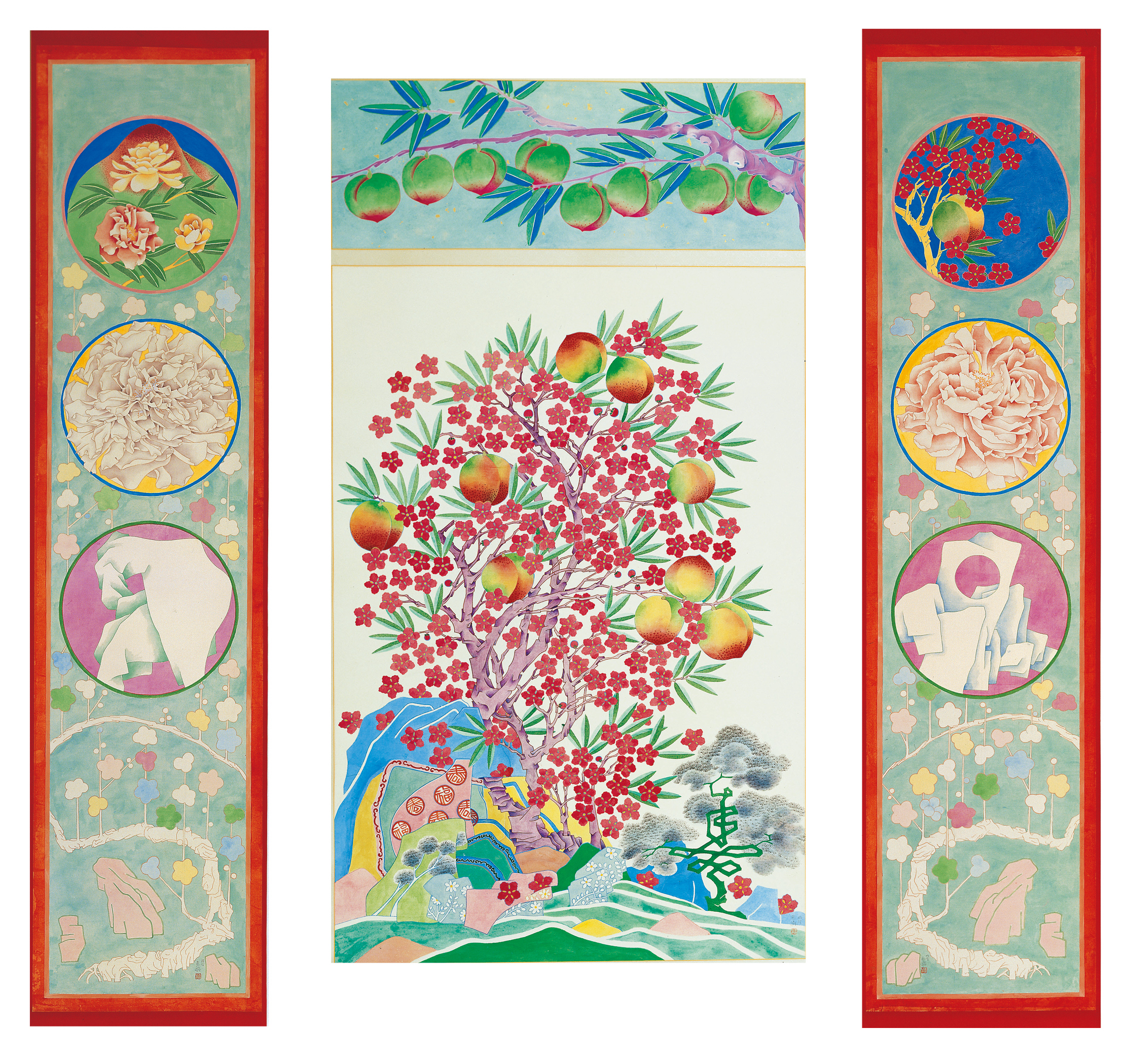
Yuan Jai
Longevity-Triptych
2006
Ink and color on silk
189.5 × 45 cm ×2;168.3 × 89.8 cm
After her retirement, the leisurely and unrestrained life of this period, together with her single-minded dedication to creation, is fully reflected in her works from this time. In this period, she used strong colors on silk as the only materials of her paintings and her styles were becoming more spontaneous and carefree just like her life. The major three subjects of her works in this period were Home, Rock, and Bronze Ware. In the Home series, Yuan depicted things in her daily life, such as herself, her family, studio, dinner table, and the backyard garden. This series is somewhat autobiographic of Yuan Jai’s life and conveys her interpretation of the importance of cultural heritage. The Rock series is inspired by the classical forms and designs of Taihu Rocks from Suzhou, a type of famous scholar rocks for Chinese gardens. Out of her vibrant imagination, Yuan Jsi breathed life into these rocks and turned them into interesting characters in her works. Her Bronze Ware series is inspired by the ancient bronze wares from the Shang and Zhou Dynasties in Chinese history, in which Yuan Jai’s cultural knowledge acquired during her 20-year service at the National Palace Museum in Taipei is completely demonstrated. In 2011, the work of Reaching Seventy made unequivocally clear her eternal, undying relationship with art.
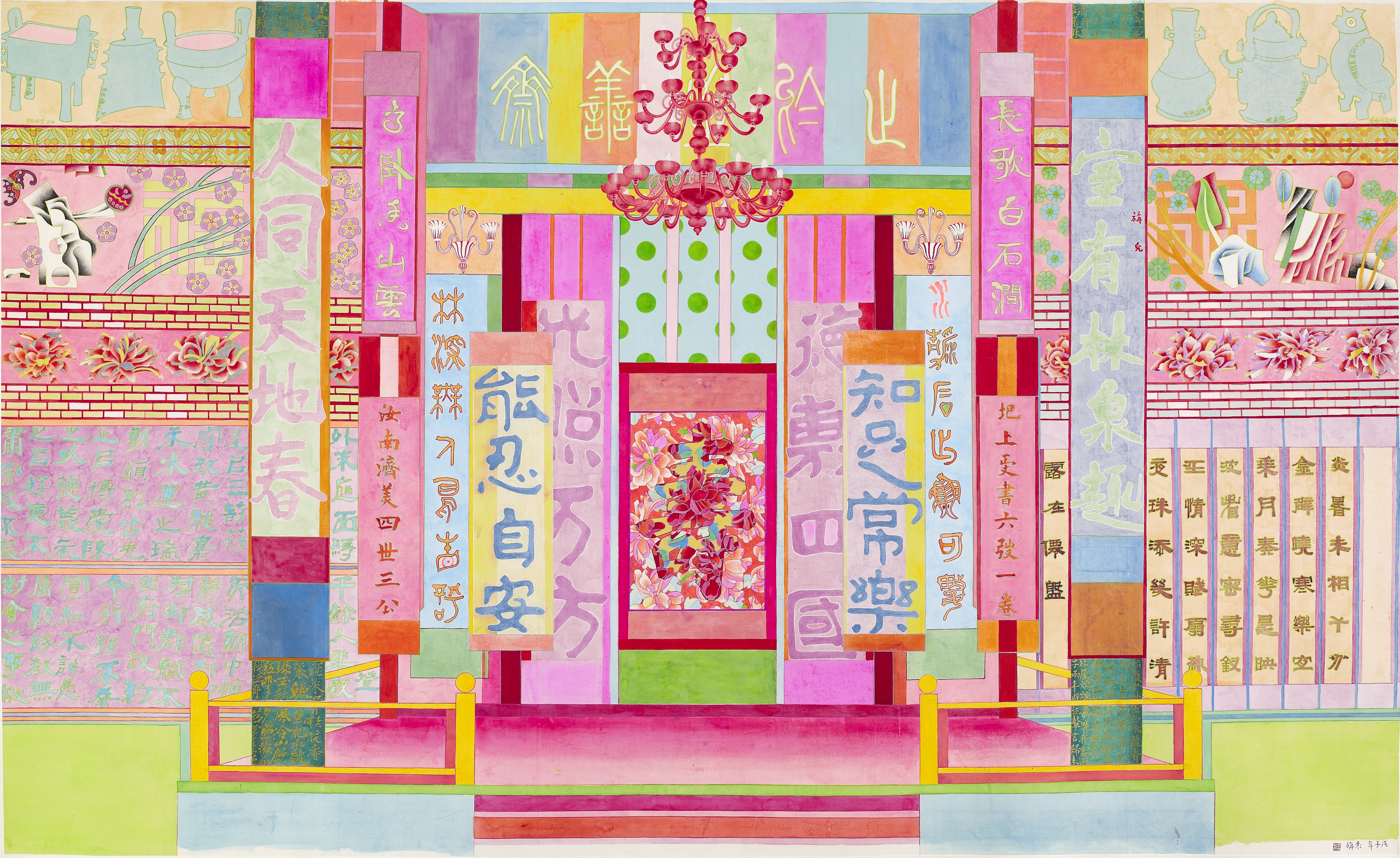
Yuan Jai
Cultural Hall of Calligraphy
2008
Ink and color on silk
130 × 213 cm
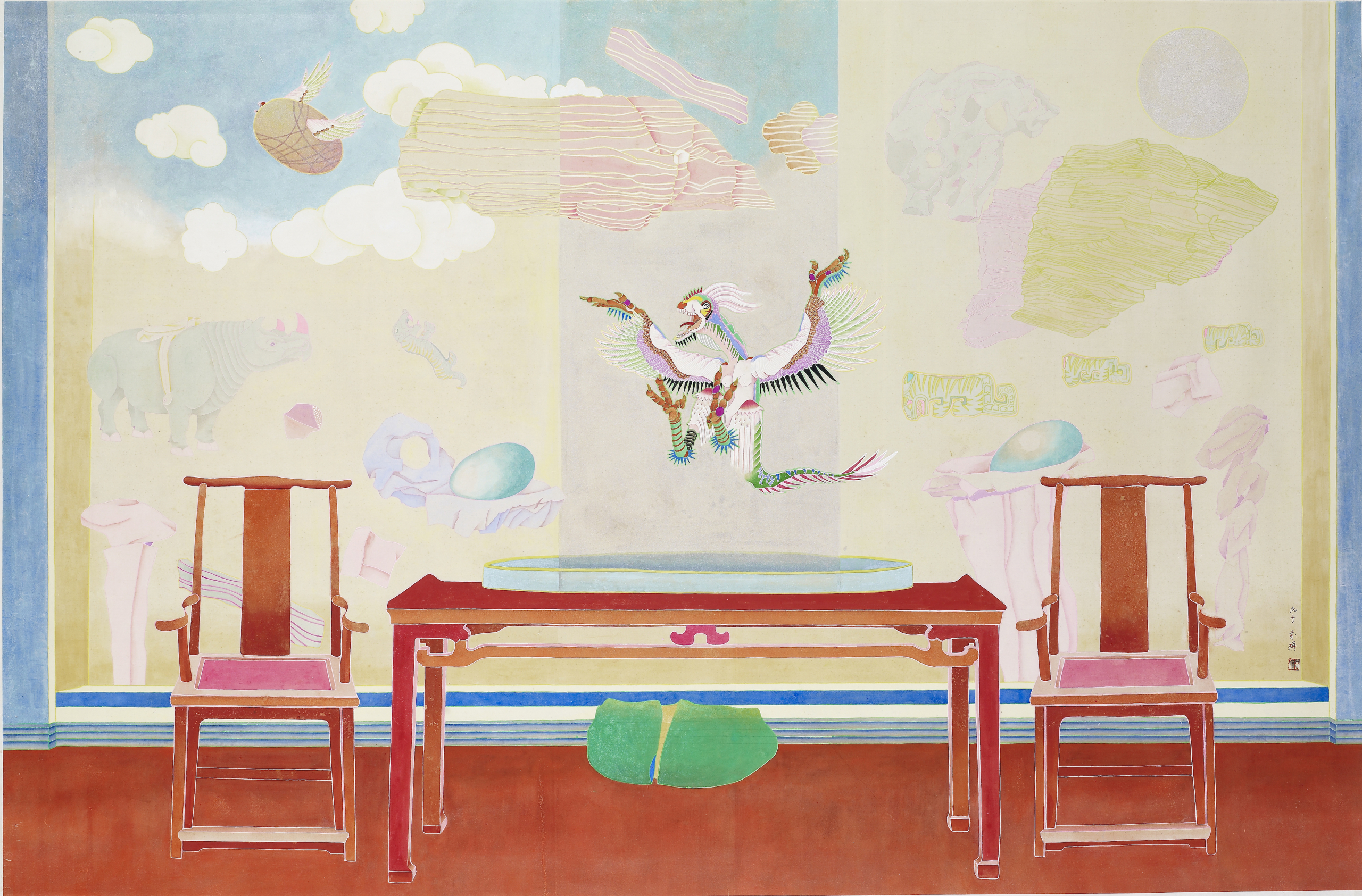
Yuan Jai
My Workshop
2008
Ink and color on silk
125 × 186 cm
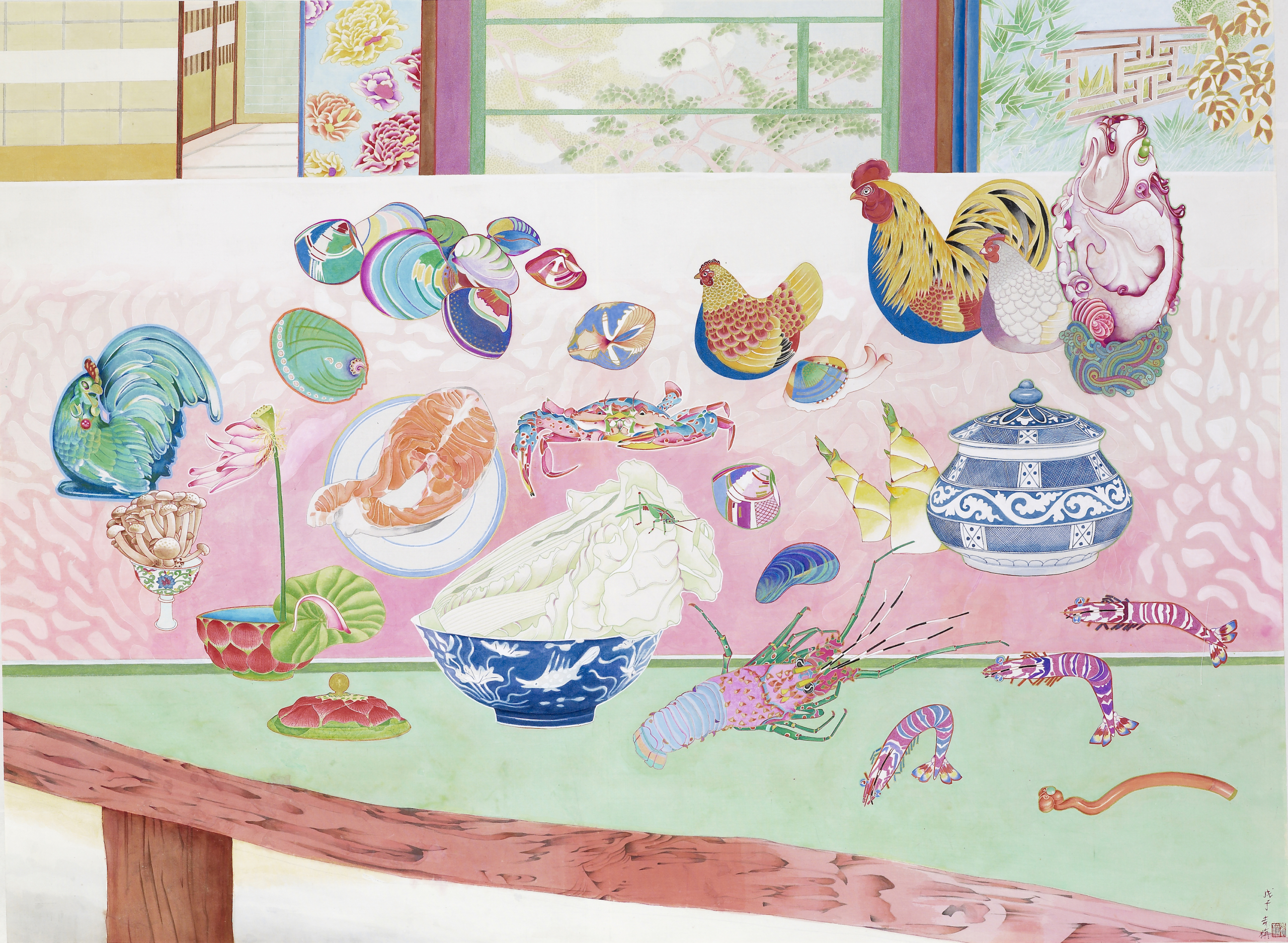
Yuan Jai
My Dining Table
2008
Ink and color on silk
102 × 140 cm
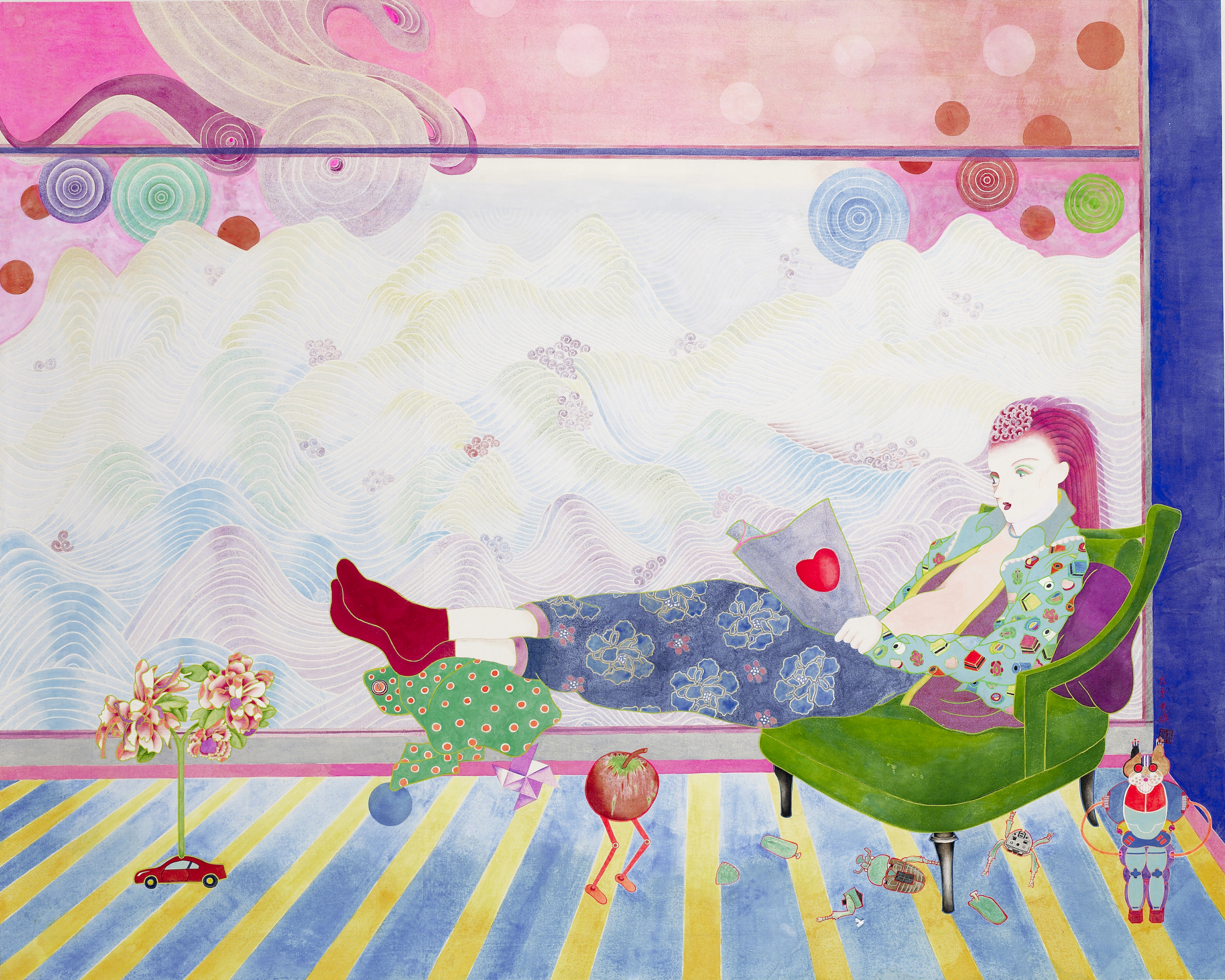
Yuan Jai
Self Portrait
2008
Ink and color on silk
112 × 139 cm
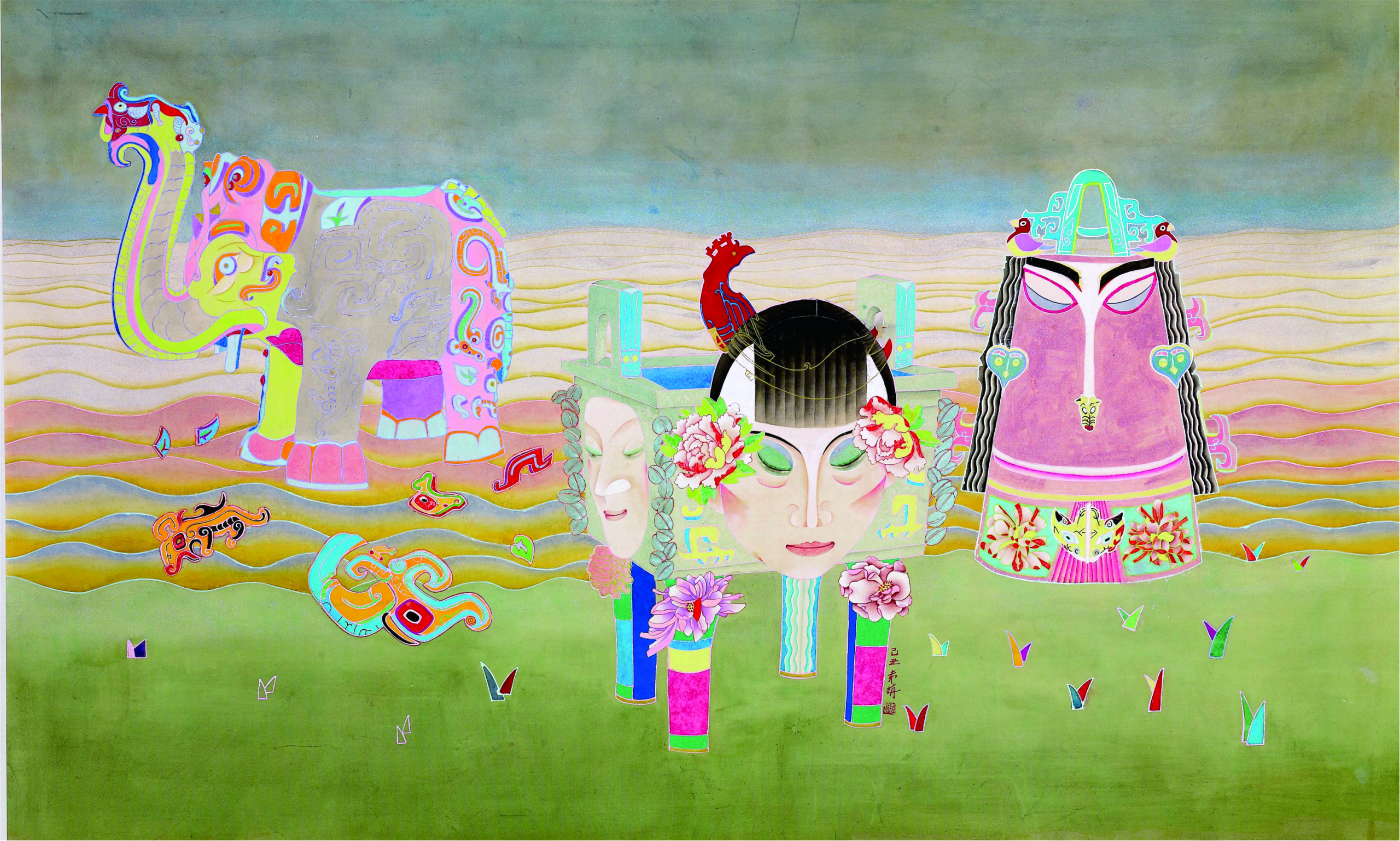
Yuan Jai
Profound
2009
Ink and color on silk
82 × 135 cm
2010’s
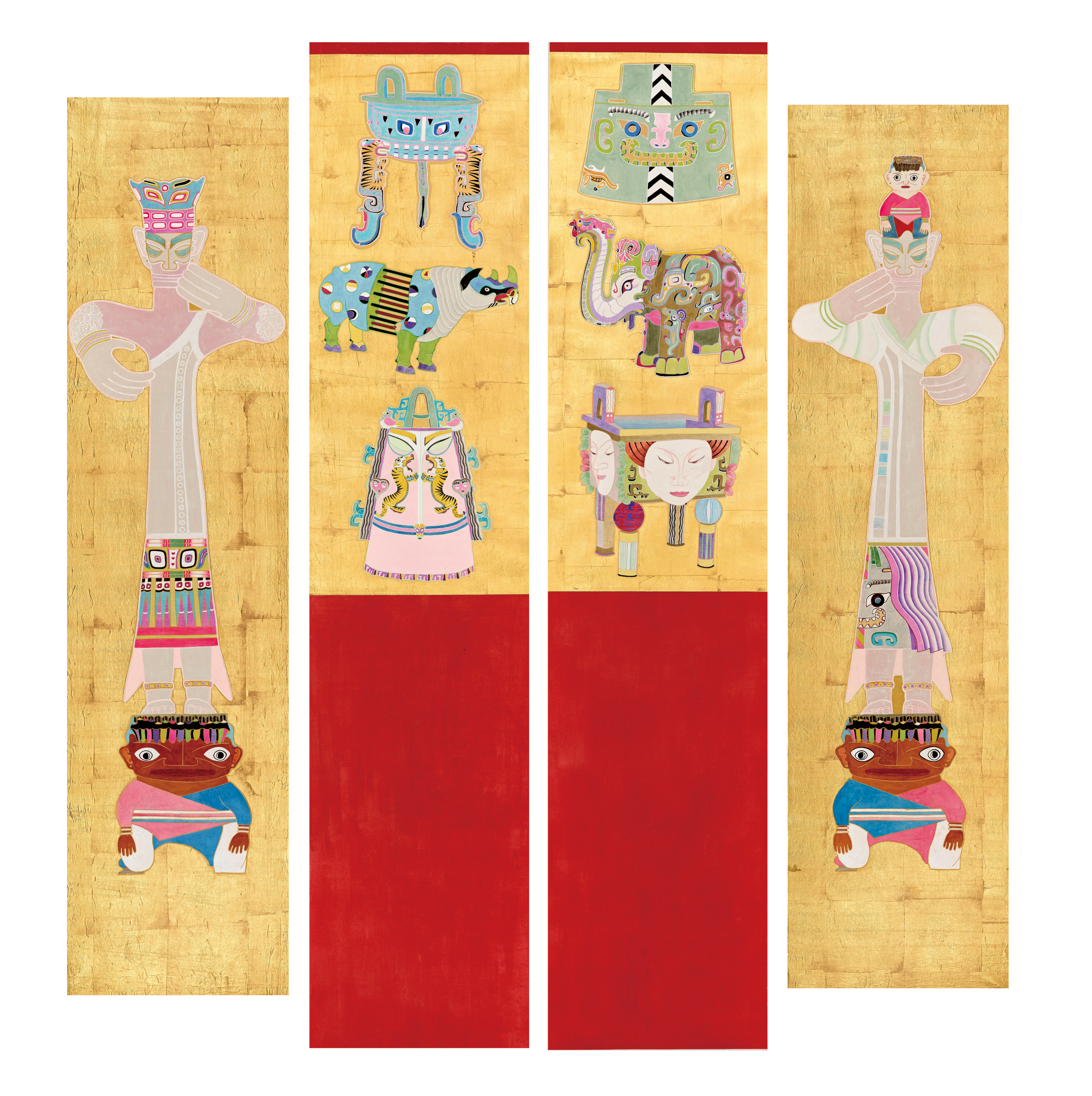
Yuan Jai
Curio Tetraptych
2011
A set of four, ink and color on silk
176×43cm×2;203×44cm×2
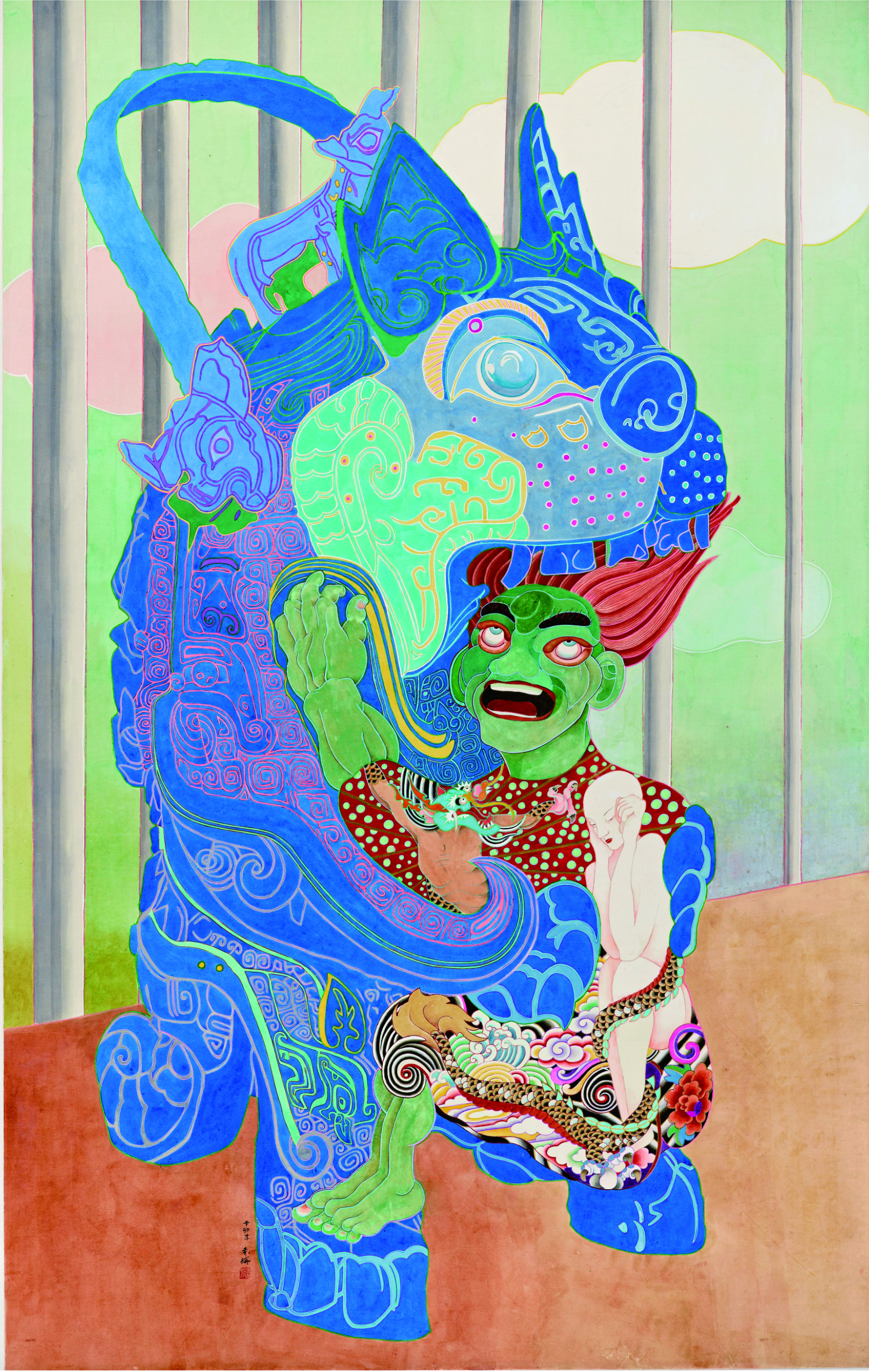
Yuan Jai
Counter-attack
2011
Ink and color on silk
136 × 87 cm
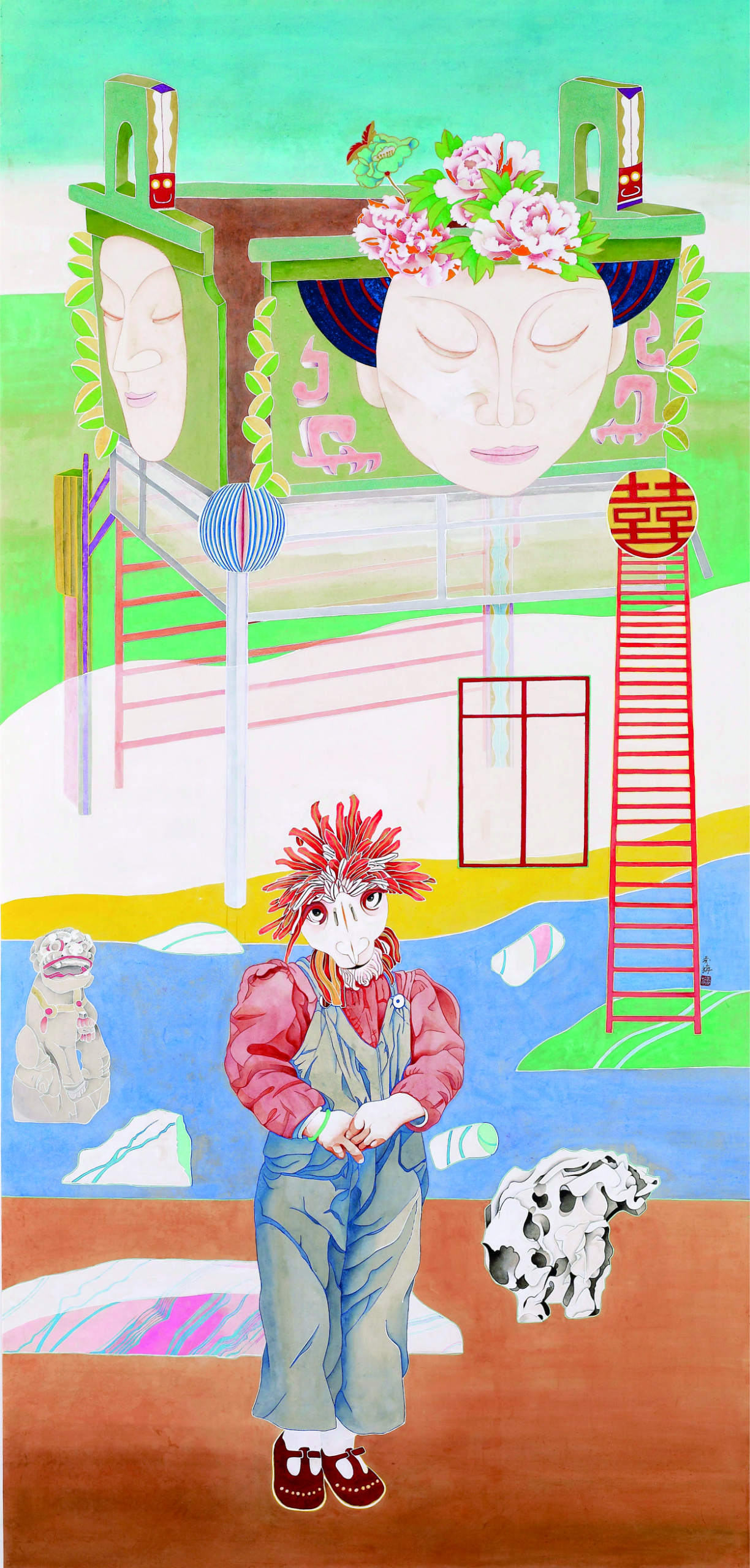
Yuan Jai
Reaching Seventy
2011
Ink and color on silk
190 × 90 cm
If we trace back what Walter Benjamin said, “the art of storytelling is reaching its end because the epic side of truth, wisdom, is dying out,” then Yuan Jai revives the narrative potential of Chinese painting by continuously positioning the narrative within the relationship between the individual and history. She explores the cultural ecosystem cultivated by individual life experience, thereby developing a series of cultural narratives. Only by locating these narratives within continuous—rather than fragmented—cultural processes can the artist enter into the realm of life philosophy through the composition of a painting. Thus the historical artefacts and implements that appear in Yuan Jai’s paintings are neither props nor allusions; rather, they are vessels of common cultural memory, waiting for us to encounter them, when they reanimate as vital forces of association.
The resplendent paintings of Yuan Jai express a world of images that reflect the artist’s lived experience. These images are dense concentrations of cultural knowledge that form a space for ethical and aesthetic contemplation—a space deserving of our appreciation and enjoyment. Yuan Jai’s paintings represent a tenacious effort to create a space of both solace and transformation amid a volatile world, a space in which we may, through painted images, momentarily revisit the profound contemplation of life itself.
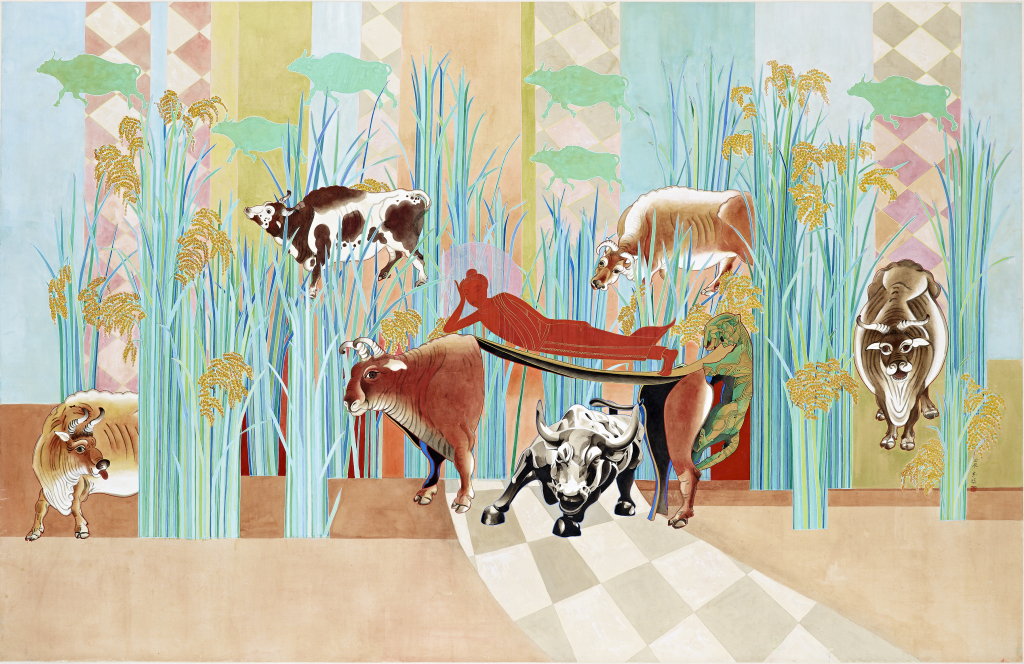
Yuan Jai
Charge
2012
Ink and color on silk
133 × 204 cm
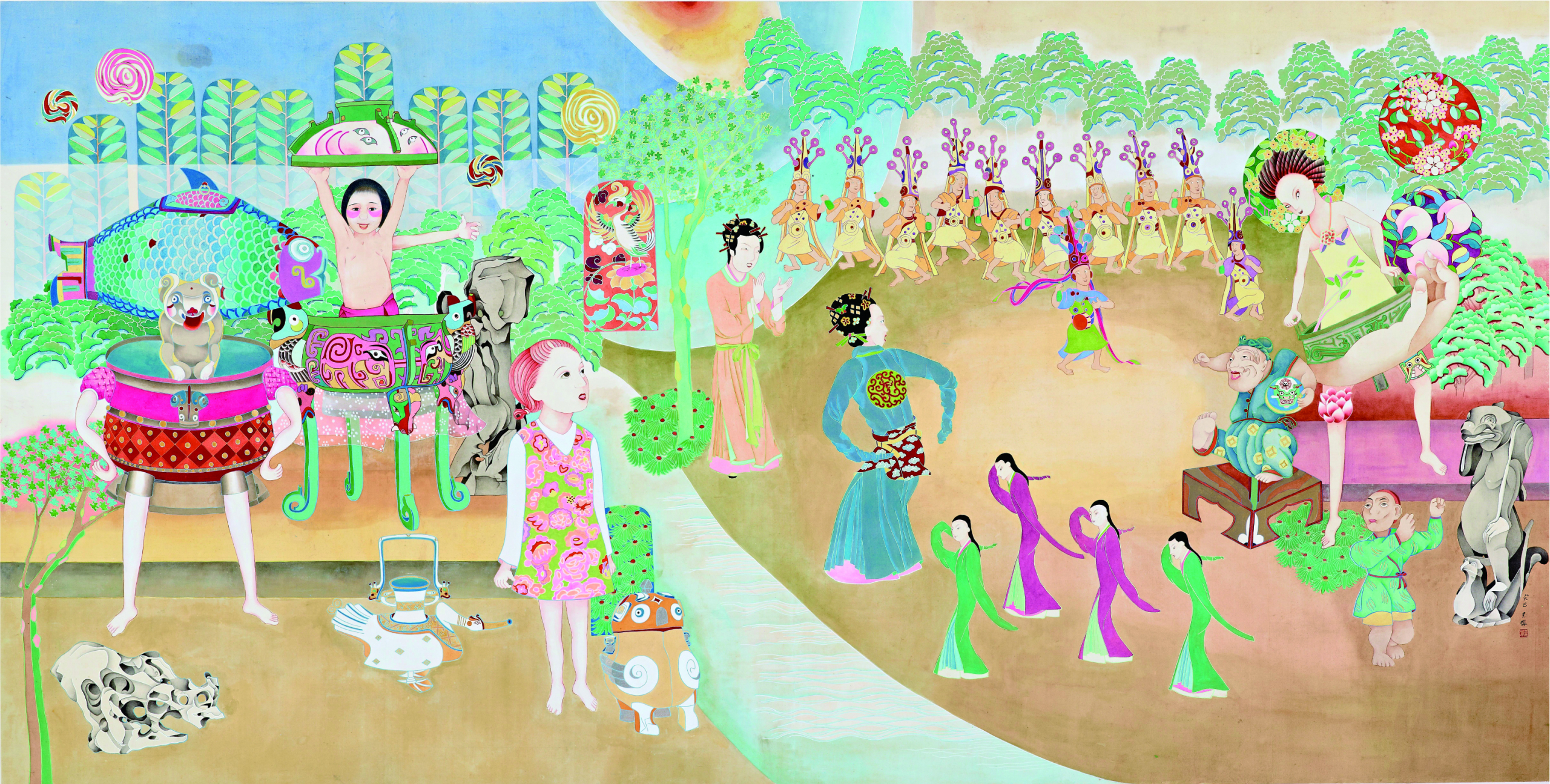
Yuan Jai
Wonderland Revisited
2013
Ink and color on silk
112 × 220 cm
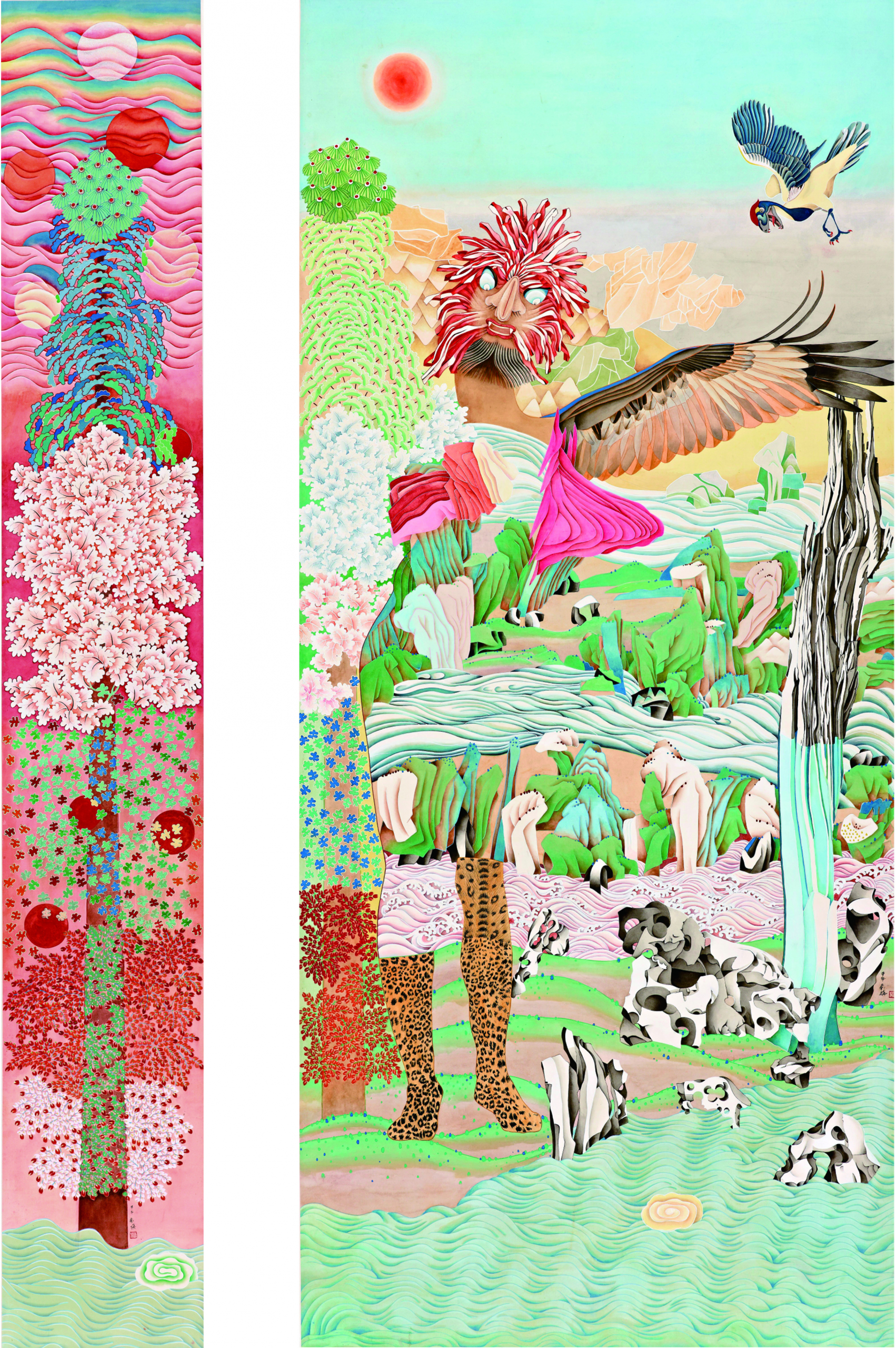
Yuan Jai
Live On and On and Live On
2014
Ink and color on silk
A set of two, Live On and On (left) : 228 × 34 cm, Live On (right) : 228 × 101 cm
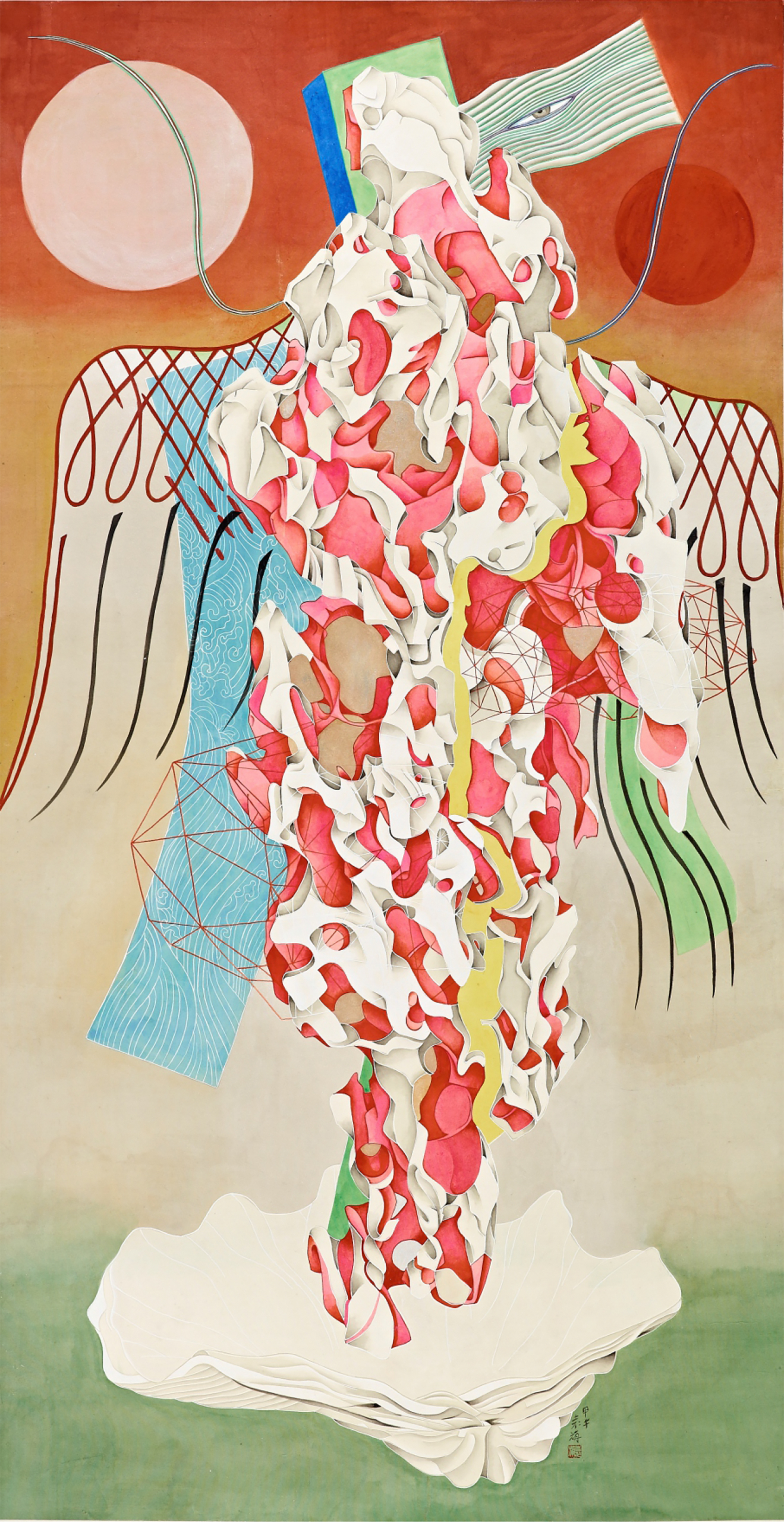
Yuan Jai
Birth
2014
Ink and colour on silk
134 × 70cm

Yuan Jai
Garden in the Mirror
2014
Ink and color on silk
49 × 177 cm

Yuan Jai
Nature Within
(A Room Possessing Delights of Forests and Streams, Humans Sharing the Spring with Heaven and Earth)
2016
Ink and color on silk
A set of two
A Room Possessing Delights of Forests and Streams (right) : 203 × 89 cm,
Humans Sharing the Spring with Heaven and Earth (left) : 203 × 89 cm

Yuan Jai
Hazard Path
2016
Ink and color on silk
47 × 396 cm
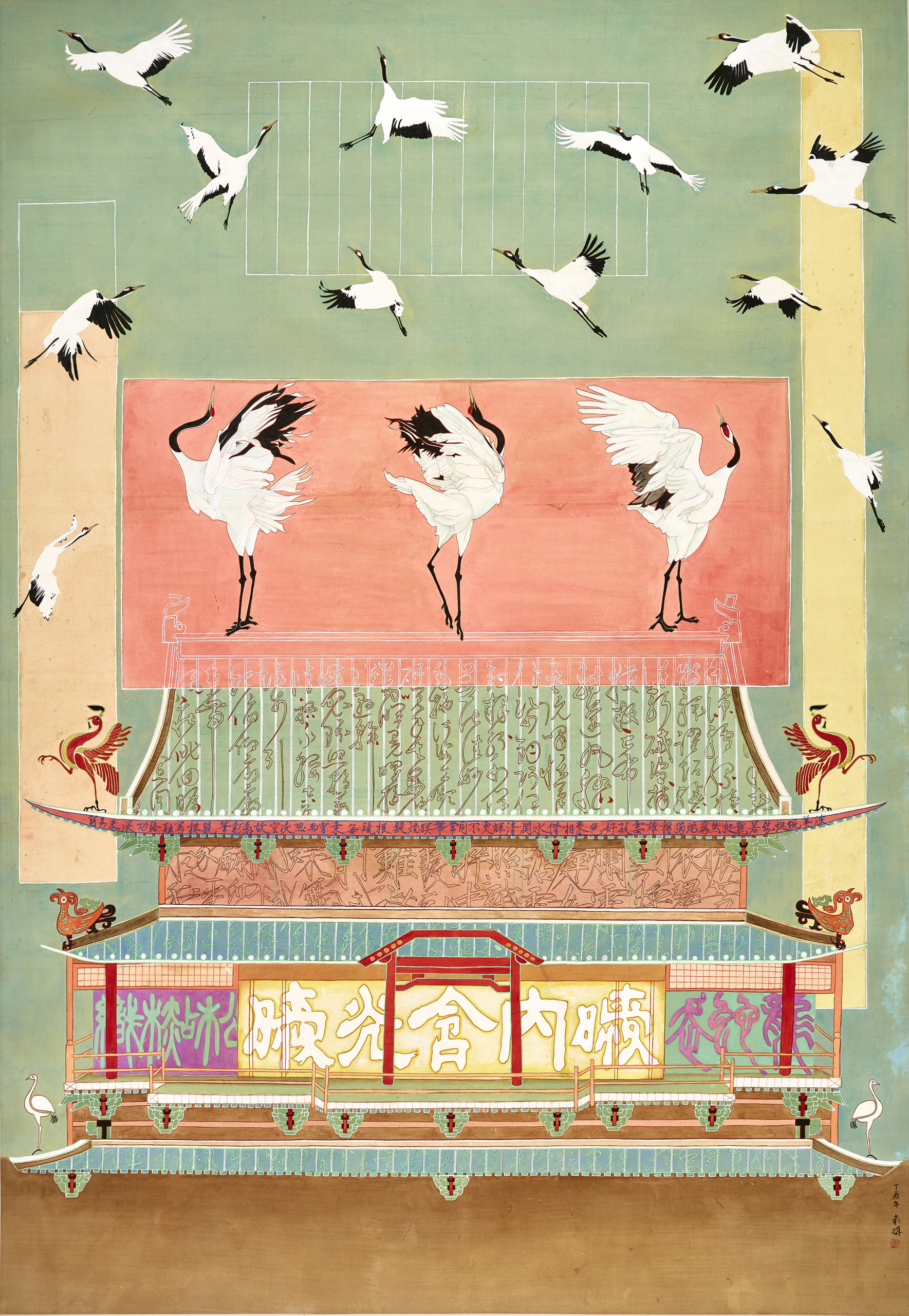
Yuan Jai
Auspicious Cranes
2017
Ink and color on silk
171 × 118 cm
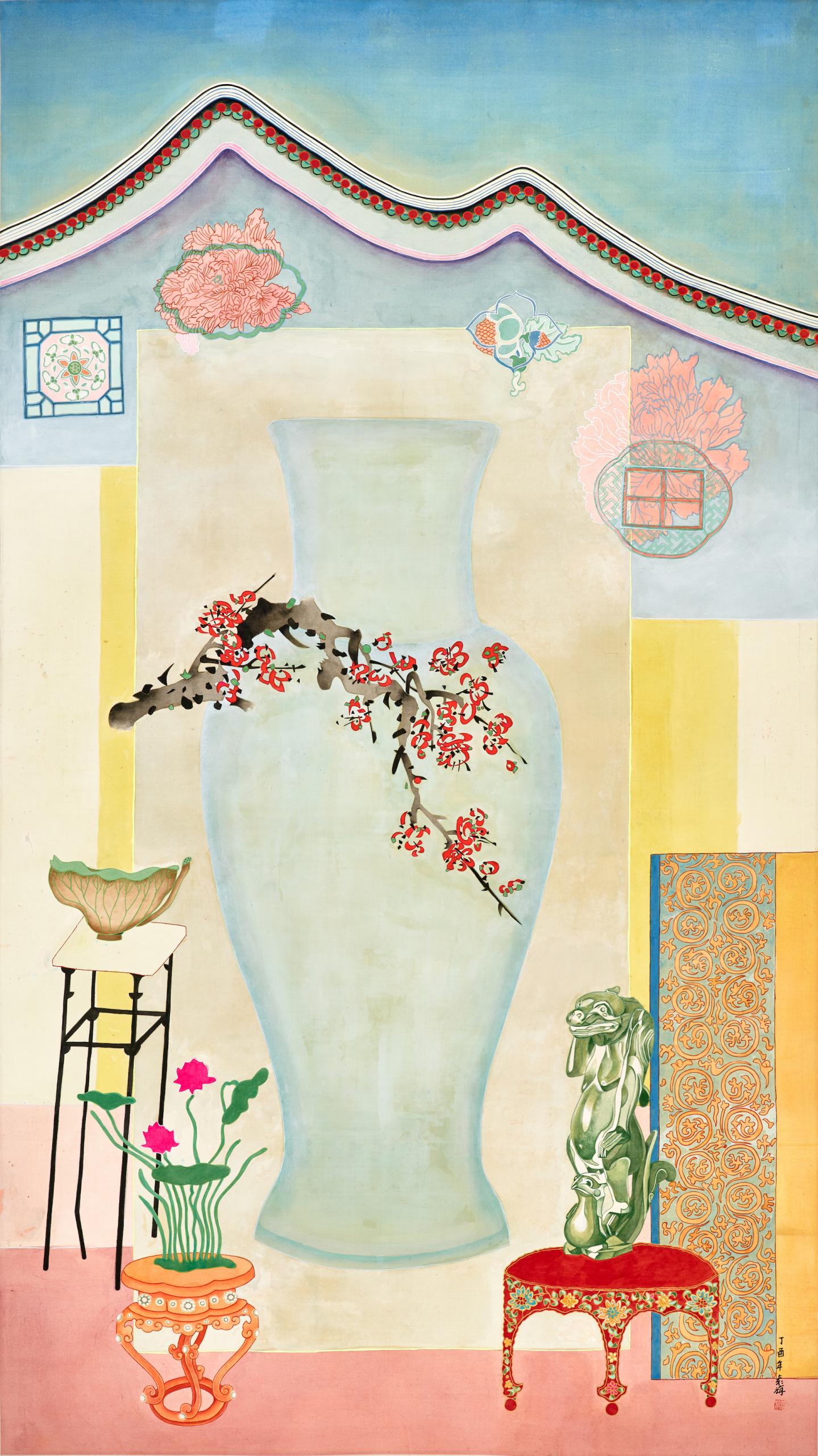
Yuan Jai
Amor fati (Love of Fate)
2017
Ink and color on silk
159.2 × 89.3 cm
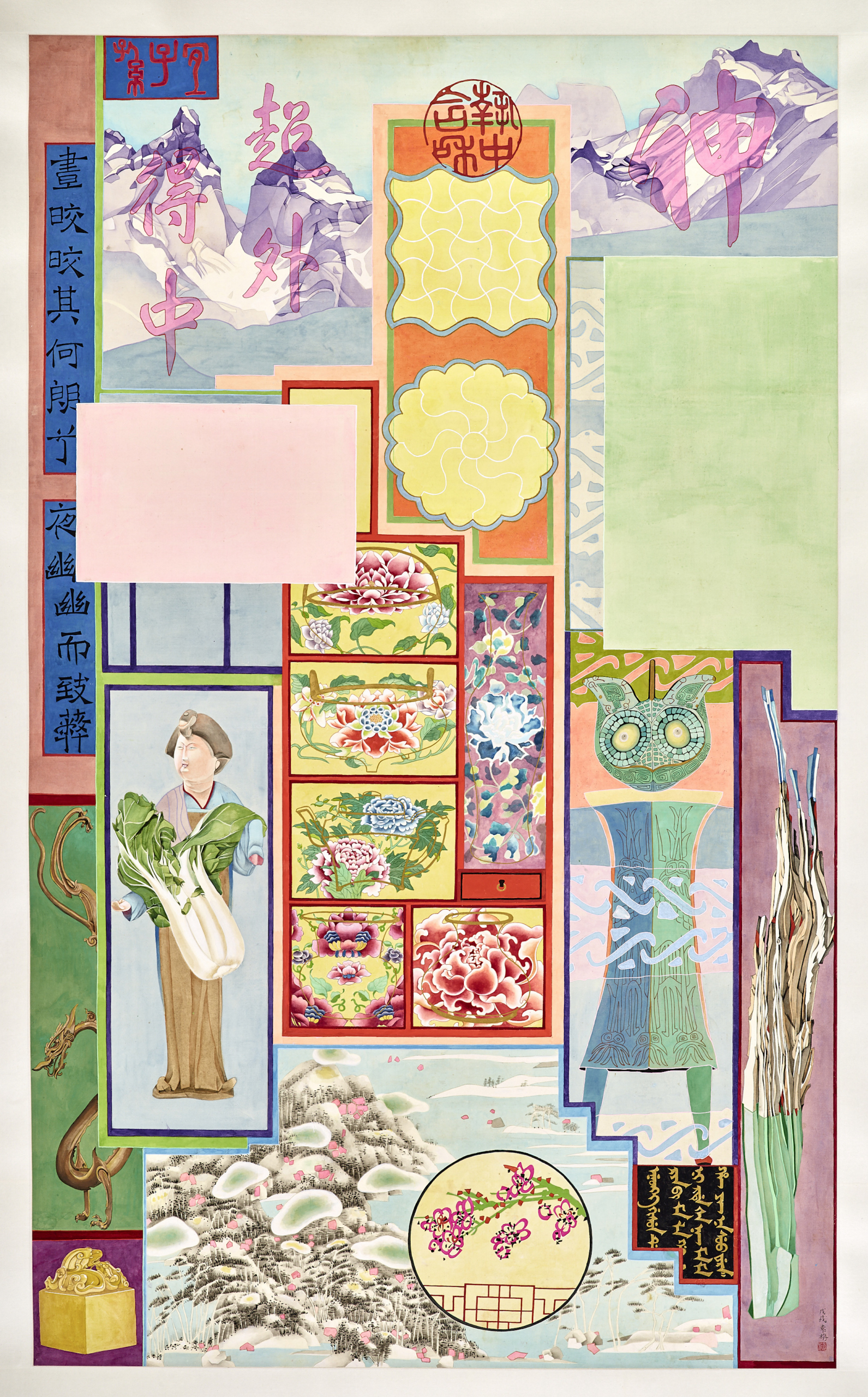
Yuan Jai
Pavilion of Treasures
2018
Ink and color on silk
178.1 × 107.8 cm
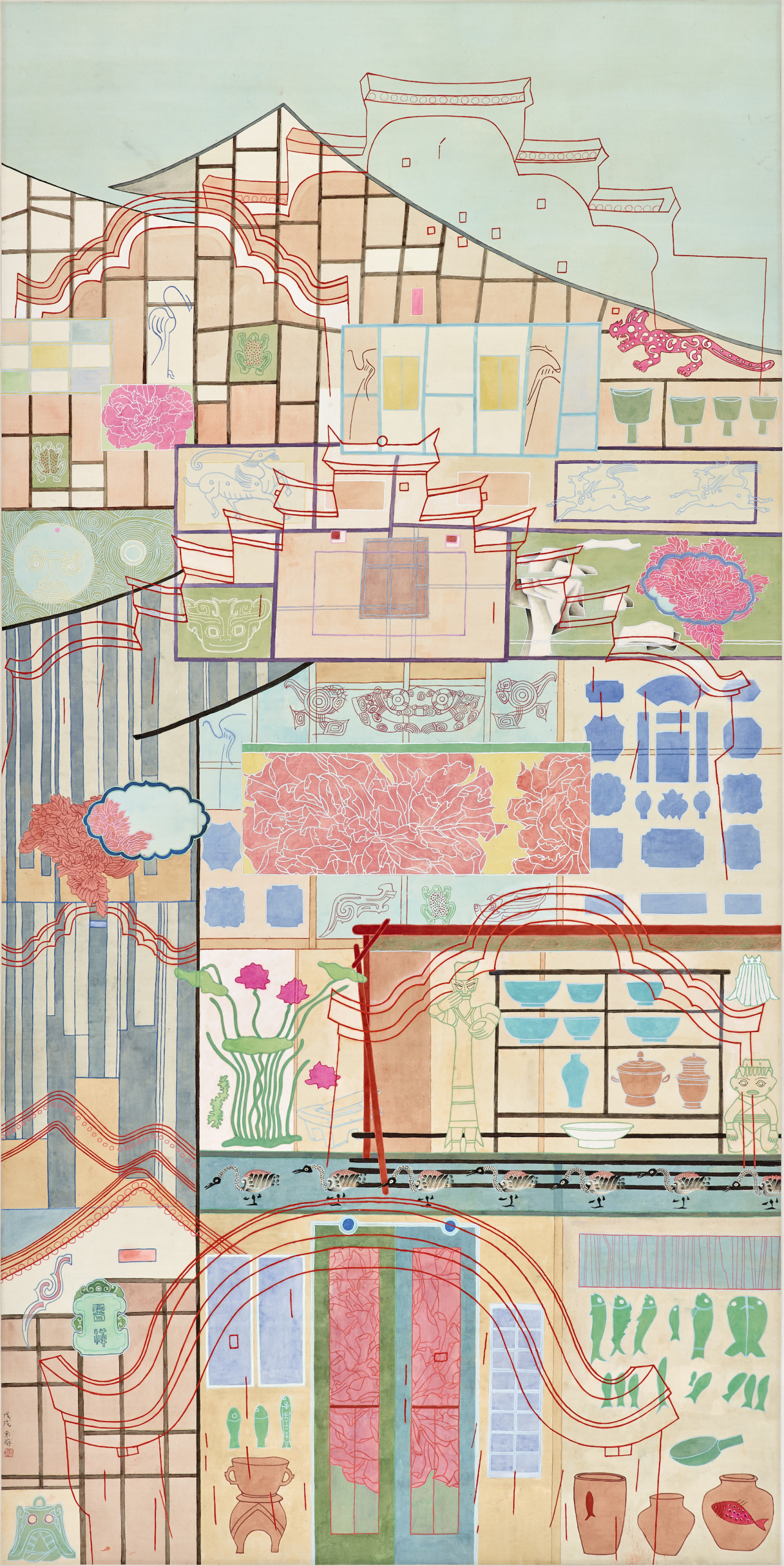
Yuan Jai
A Faraway Place
2018
Ink and color on silk
207.3 × 103.2 cm
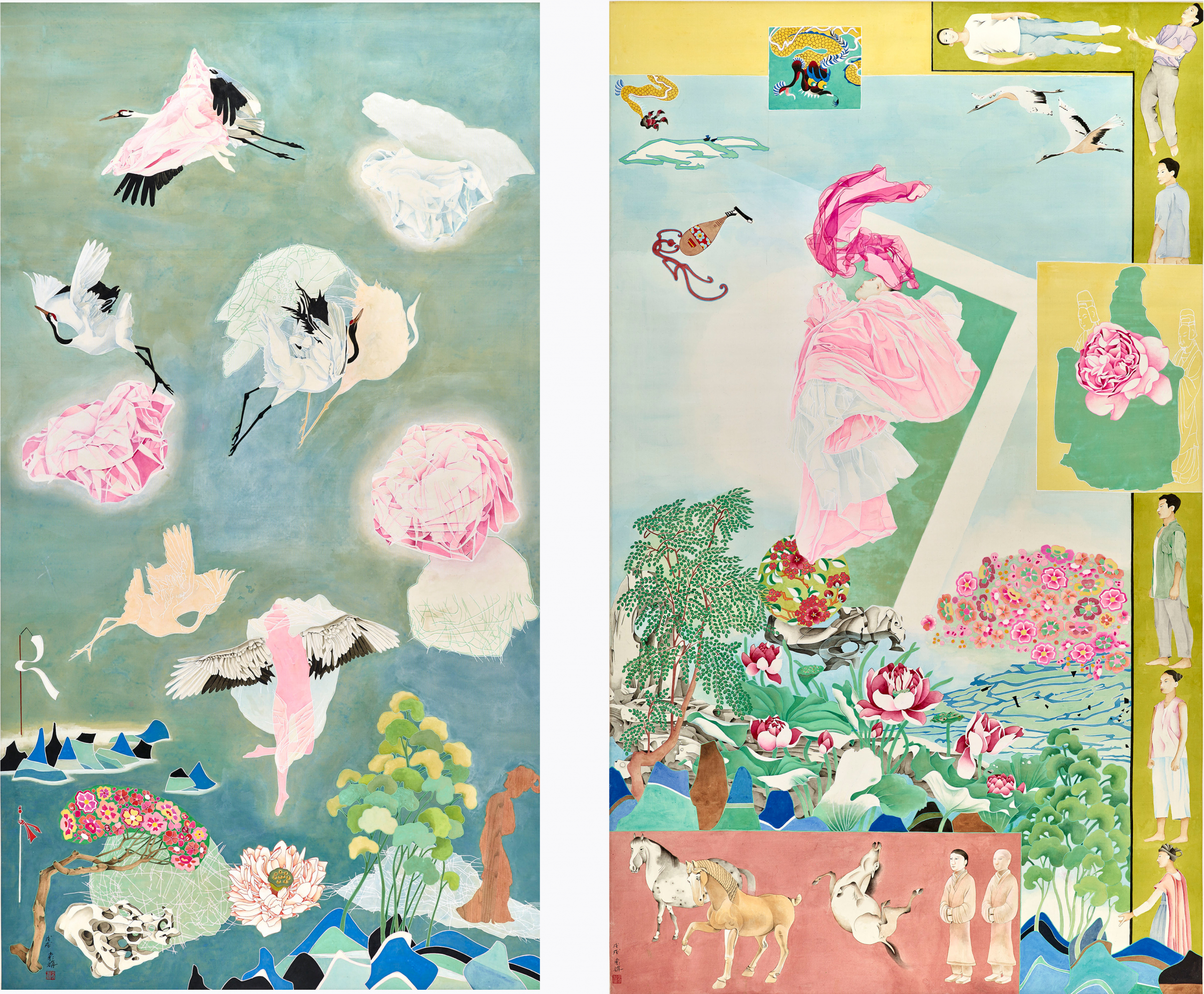
Yuan Jai
The Goddess of Luo River
2018
Ink and color on silk
A set of two
A Glance of Startled Swan Goose (right) : 179 × 107 cm, Play (left):178.4 × 98 cm
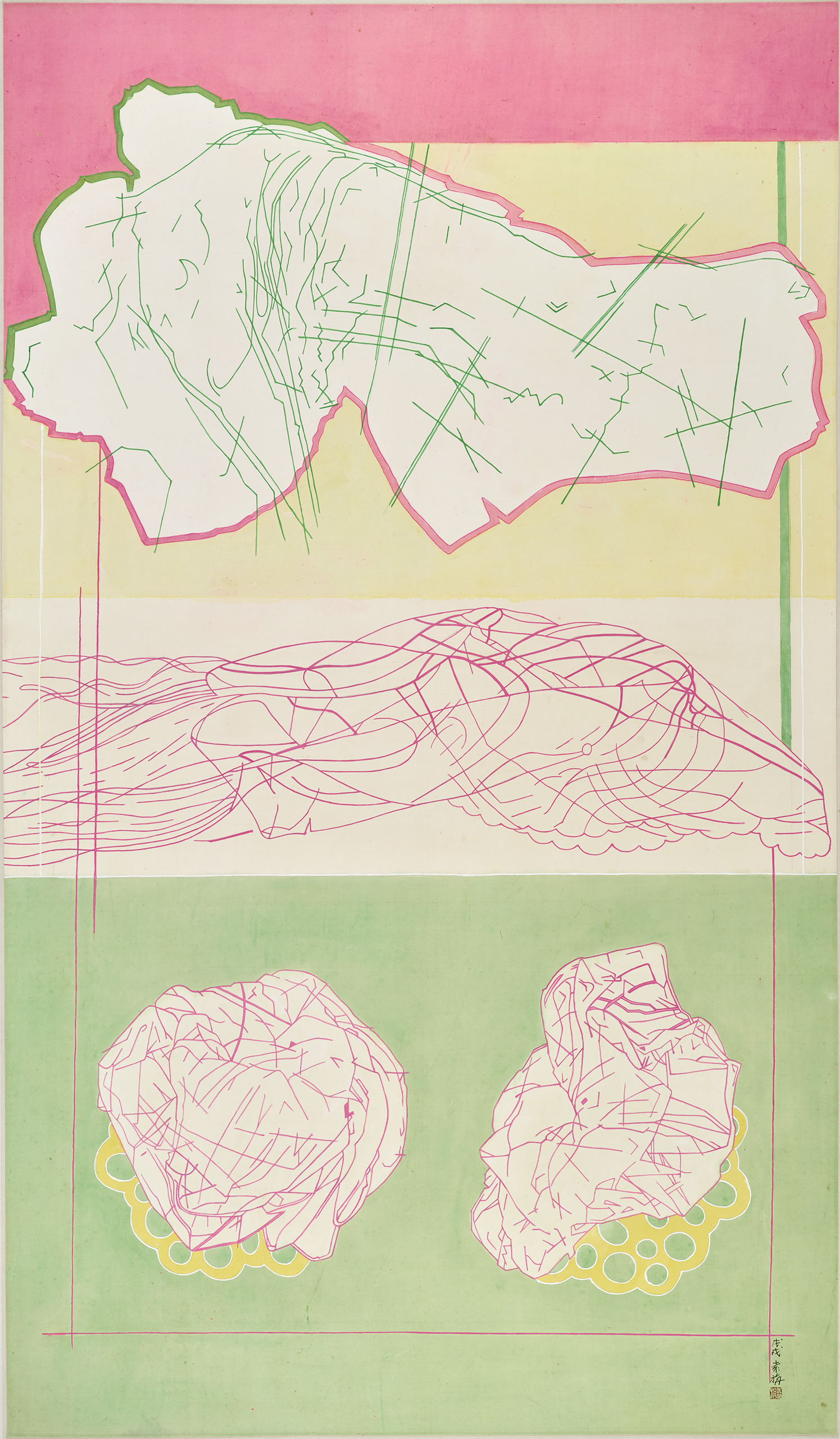
Yuan Jai
Reclining
2018
Ink and color on silk
134.3 × 77.5 cm

Yuan Jai
All Living Things Flourish
2018
Ink and colour on silk
21.4×180.2cm

Yuan Jai
Dot Dot Dot, Loop Loop Loop
2018
Ink and color on paper
69 × 135.5 cm

Yuan Jai
I Love to Paint and to Read as Well
2019
Ink and color on silk
104 × 177.5 cm
Yuan Jai transforms her memories of an ancestral temple from her father’s photographs in Cultural Hall of Calligraphy (2008); then, eleven years later, she further develops this idea in I Love to Paint and to Read as Well (2019). These paintings exemplify Yuan Jai’s extensive considerations of the endless potential of spatial montage in ink painting, as well as her adept exploration of Shu Hua Tong Yuan (the common origins of painting and calligraphy).
The traditional expression “Shu Hua Tong Yuan (书画同源)” can be taken to mean that Chinese writing and painting share the same historical origins, and it also suggests that painting and calligraphy have certain aesthetic principles in common. In the words of the scholar Wen C. Fong, “painting can be treated like calligraphy […] the brushwork of calligraphy is used in painting to unite self and image.” This unity lies at the heart of the particular expressiveness of Chinese painting.
It must be noted that Yuan Jai’s exploration of the connection between calligraphy and painting has taken place in the context of dramatic paradigm shifts in art theory and practice during the twentieth century. One such shift in twentieth century Western art was the use of written language to disrupt the traditional emphasis in painting on visual indulgence. Ancient Chinese scholars emphasized the aesthetic characteristics and cultural connotations of Chinese characters, but Yuan Jai goes further, experimenting with the fusion of language and painting. Calligraphy brushwork requires the artist to paint with a harmony of physical movement and spirituality; Yuan Jai takes this practice a step further by transforming this harmony into the gestalt that her paintings express.
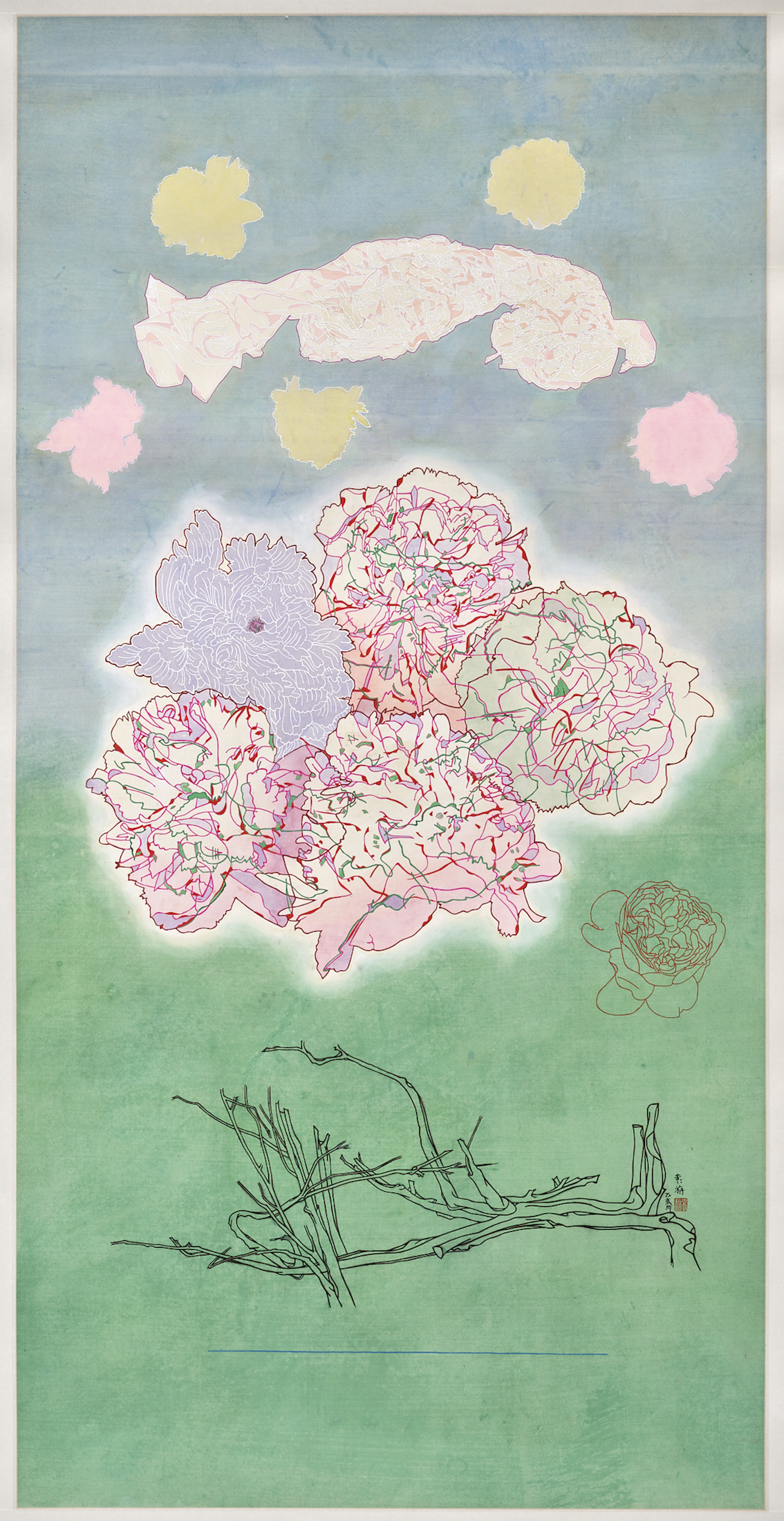
Yuan Jai
The Sublime in Dead Wood
2019
Ink and color on silk
175.6 × 88 cm
2020-Now
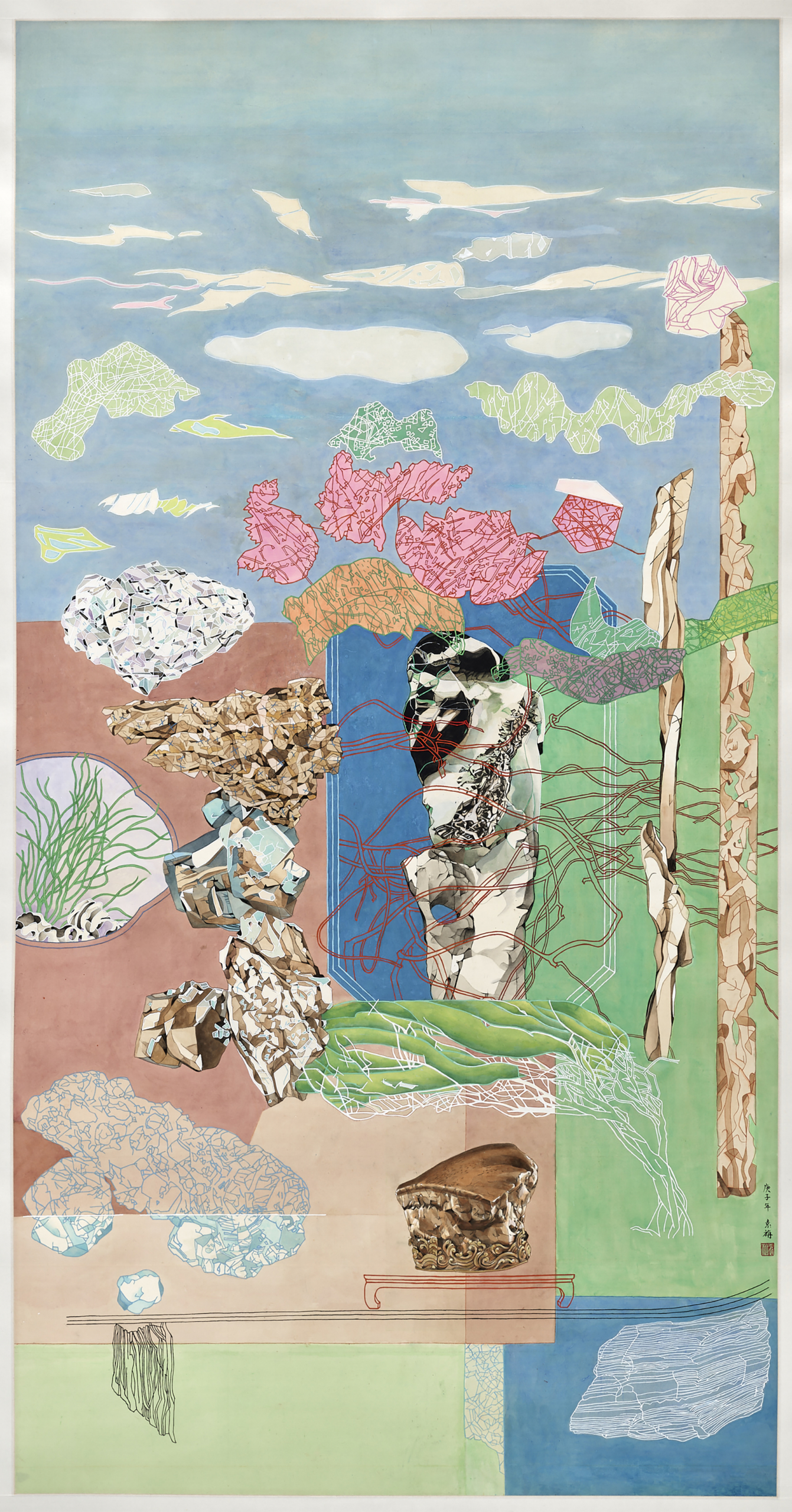
Yuan Jai
The Pleasure of Piling Up Rocks
2020
Ink and color on silk
178.8 × 92.5 cm
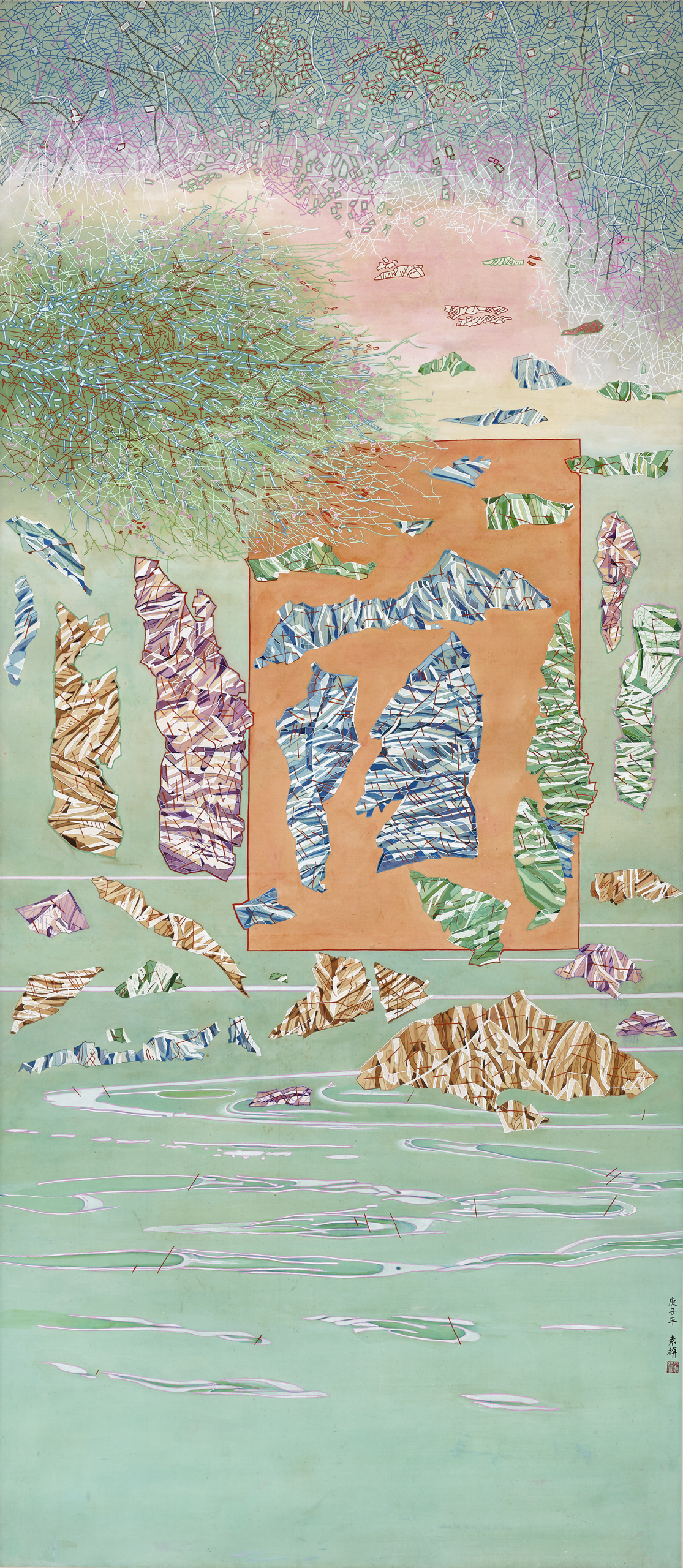
Yuan Jai
Peach Blossom Spring Water
2020
Ink and color on silk
210 × 92 cm

Yuan Jai
Auspicious Clouds in Summer
2020
Ink and color on silk
185.3 × 94.8 cm
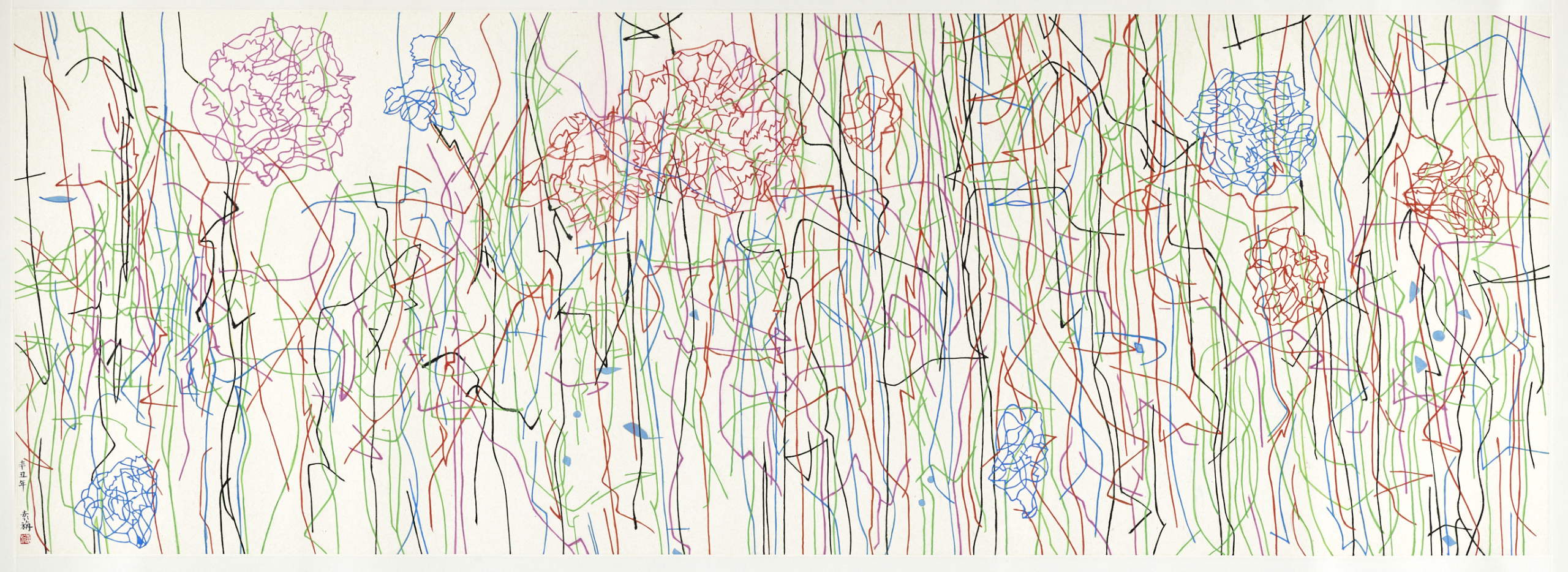
Yuan Jai
Lotus Pond II
2021
Ink and color on paper
60 × 170.3 cm
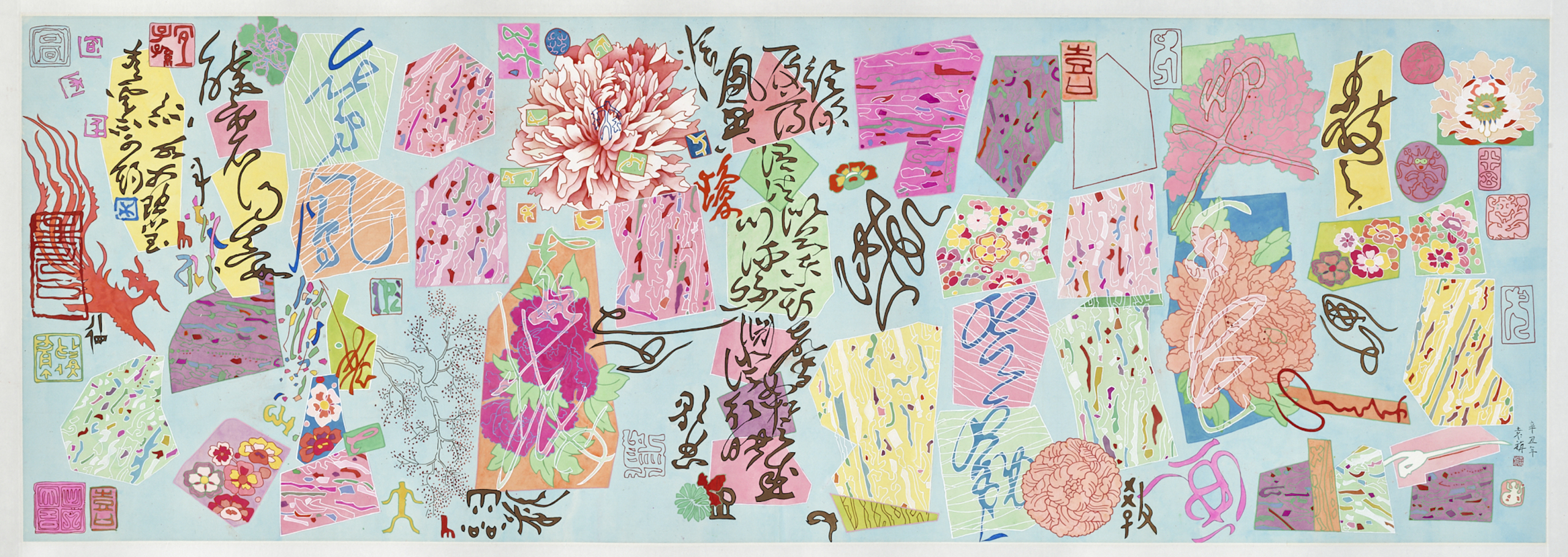
Yuan Jai
Fu (rhapsody) I
2021
Ink and color on silk
58 × 169 cm
Where racing lines meet luminous colors; where calligraphy and ink painting regain their youth, journeying, transforming, and embracing together; where the vast horizons of cultural imagination converge with the delicate, authentic textures of personal life; where time-honored ink techniques engage in endless dialogue with modern consciousness – in these spaces, Yuan Jai’s art reveals the living pulse of brush and ink, and a new language shaped by the life it carries.
The texts compiled from the following sources:
A Visionary Mind: The Art of Yuan Jai in a Quarter-Century, Kaohsiung: Kaohsiung Museum of Fine Arts, Chinese and English, 2012.
Yuan Jai Reader Vol.1-Multiple Readings of Cultural Vision, Guangzhou:The Pavilion, Chinese and English, 2020.